Previous – 25. Animated | Contents
We’re honored to be able to publish Stan Taylor’s Kirby biography here in the state he sent it to us, with only the slightest bit of editing. – Rand Hoppe
THE ANIMATED ARTIST
If Jack’s optimism and dreams were shattered by the downfall of the Lord of Light production, then a whole generation’s faith and hope died on a dreary Dec. day in 1980. David Mark Chapman assassinated John Lennon in front of the Dakota mansion where Lennon lived with his wife Yoko Ono. Lennon had been the driving force behind the skiffle band that became the Beatles, and a half of the greatest songwriting team in history. He was also known as the passion and wit behind the cultural eruption of the 60-70’s, and his death ended the Love generation. The two teams most responsible for the culture explosion of the 60’s and 70’s were now irrevocably split- never to be put together. One by decision, one by murder most foul.
A small aside:
“Did you know Stan Lee initially wanted to call Marvel’s original and still greatest creation the FF, “The Fabulous Four”? No kidding, everything that we know today as Marvel Comics might have been built on a flamboyantly gay epithet if then-publisher Martin Goodman had not prevailed and made Stan change it to The Fantastic Four. And so it fell to John and Paul and George and Ringo, who hit world culture at the same time as Reed and Sue and Johnny and Ben, to be known as “The Fab Four.”
Haven’t a clue if true, but it’s the quirky kind of stuff you accumulate when researching history.
Totally apropos of nothing a research organization asked
Which team made the greater contribution to their field?
Jack Kirby and Stan Lee

63%
John Lennon and Paul McCartney

37%
Jack’s new animation job had some immediate benefits. He was able to work on large scale boards, which helped his vision immensely, plus the people who he worked with were in awe of his history and talent. He was the essence of an idea man, no longer restricted by having to work up every little detail, or backgrounds, he was simply throwing out ideas- something he had done all his life.

Jim Woodring an award winning illustrator had just been hired by John Dorman to help out on storyboards. He met Jack Kirby and Jack took on a role as mentor for the young artist. Gil Kane also helped him out. Jim recalls;
“I worked with Jack Kirby and Gil Kane. During post production season my job was to wait for Jack Kirby to come in with a thick stack of crescent board tucked under his arm on which he had drawn anything which came into his mind in terms of characters and possible show ideas. I’d ink them and watercolor them, and they’d be used to pitch shows. Kirby had no restraints put on him and the ideas he came up with, particularly towards the end of his tenure, were just completely psychotic off-the-wall aberrations.
They were unbelievably great. I have a photo of Kirby playing a Stratocaster. We had a skiffle band at the time, and Kirby came in one day and picked up an electric guitar, and started wind milling like Pete Townshend.”
Jim recalls a time of Jack telling his stories to the other artists. “He was fun to draw out in conversation because everything he said was unpredictable. I remember he told me a war story. He told me he was in Italy in WWII and that his division was being hemmed in by some Axis affiliate and they were all going to die, it was obvious. There was one little skiff that was reserved for the officers, so Kirby crawled through the mud to his commanding officer and he said, “Listen pal, I’m afraid I’m gonna get shot.” His CO said, “We’re all going to get shot!” And he said, “But I’m Jack Kirby.” The CO said, “Who?” “I’m Jack Kirby. I invented Captain America.” And the guy said, “Oh, really? Well look, that boat is supposed to be for me, but you take that and you row over to that village across the land and you’ll be safe.” So Jack got in the skiff and rowed across the water while the rest of his division get slaughtered over there. He crawled into a barn and peasant women brought him breadsticks and cold consommé. At least that’s how I remember him telling it.” Kirby told tales. Jim loves to tell of Kirby being chauffeured. “My understanding is that he couldn’t drive a car. He’d get behind the wheel of a car and he’d think he was in a jet plane or a rocket ship or something. That’s what [his wife] Roz told me. So he never drove.”

Gil Kane remembers;
“He wasn’t driving at that point anymore, so Roz always came in with him. They’d come in once or twice a week to deliver an assignment and pick another one up. It was like a freelance job only he was on salary. When I got there, he and I were both working on presentation boards-20″ x 30″-which for me was an experience because I had never worked that size before. And I would see Jack’s stuff come in. His penciling was very impressive; it was very black-&-white. But he would hand in six boards and two or three were just not up to his usual level–wheels would be out of perspective and little things you wouldn’t expect from Jack. Maybe it was his eyesight or his age, I don’t know, but when he succeeded it would be absolutely wonderful. In fact, I wanted to steal one of the boards-they had all this stuff standing around there that they weren’t able to use, and I figured that no one was going to miss one of ’em! But I never got the opportunity to take one of his good pencils that was a homerun, right over the fence.”
“Jack was a natural-and he was a natural early on before the wall hit him. I thought that in the early ’40s, he was just about the best guy around. He had a narrative style that was way beyond Lou Fine or any of these guys. On top of that, he really knew enough about drawing and everything so that there was simply no upgrading him. He was just excellent. It was priceless to me to find Jack Kirby’s work in the “Black Owl” and the eight or nine issues of Blue Bolt, then the early Captain America, the early “Guardian.” In fact, I love the first issue of “Manhunter”-it was such a glossy issue! Beautiful! Just perfect Jack. And Jack did a series of covers for DC before he went into the service that were excellent. But nobody can be king of the world forever.”
Writer Buzz Dixon has a unique viewpoint of Kirby working at Ruby-Spears;
“I was working at Ruby-Spears Productions with Steve Gerber. They had just sold a series called THUNDARR THE BARBARIAN and now the time had come to actually develop scripts & art for the show.

Steve told Joe he could recommend some comic book artists to help give the show a more dynamic feel than standard Saturday morning fare. What he didn’t mention to me was who these artists would be. We had a production meeting; I came into the conference room early. There was a little old man sitting there, talking to John Dorman (the head story board artist for the series). I liked the old guy almost immediately: He was the only person I’ve ever met whom I could say his eyes literally twinkled.
We started talking about the show, kicking around ideas before the meeting actually got started. Steve and Joe and the rest of the writing team came in and, since I was already there & chatting with the old guy, everybody assumed we’d been introduced. The meeting started without further fanfare. As we kicked ideas around, I was astonished at the imagination the old guy was showing. Joe and Steve would throw out ideas, the rest of us would kick them around & play with them, then he would casually say something and boot that particular concept right into orbit. And he did this again and again and again, “plussing” every idea thrown out there, turning it around & inside out & making it better……and never taking credit for it. Quite the contrary: He was unfailingly self-depreciating, always deferring to others, and shrugging off praise for his ideas & concepts with a sheepish grin.
It was a great meeting, one of the best & most creative ones I’ve ever been involved in, and when it ended the old guy left with his wife (who had to drive him everywhere since he was turning ideas over so much in his mind he would get distracted in traffic) to start working on the ideas we had discussed. I remember thinking at the time how glad I was somebody with his imagination would be working on the series; not only that, but I was particularly happy how well we had hit it off. He was, as they say in the biz, a good guy to have in the fox hole.
After he left, I drifted over to Steve’s office & commented on how much I liked the old guy. “But who is he?” I asked. “Nobody introduced us.” “That was Jack Kirby,” Steve said. “That was Jack Kirby?” — no, wait, that’s not the way I said it. What I said was:
“THAT WAS JACK KIRBY ?!?!?”
Yes, Jack had finally relented to the family wishes that he no longer drove. Too many memories of cars on a curb, or pedestrians scattering as he mistakenly drove up on a sidewalk, or children left at school. Roz was now the official chauffeur. Sometimes Thib, sometimes Greg Theakston would drive Jack to shows. But Jack had the last laugh. He would let loose a huge guffaw telling a story about Roz behind the wheel. It seems that one day while Jack was working… well here’s his version, “I was at my table drawing a page lost in my imagination, when suddenly the wall to the living room explodes and showers the room with debris, followed by the family car, with Roz driving, crashing thru the garage wall into the room. It seems that she either mistook the accelerator for the brake or simply lost control while parking the car, but there she was all the way through the wall. She wasn’t harmed, but she was in shock and her pride was hurt. I laughed for days.”
Buzz also relates another anecdote that adds another layer to Jack Kirby, as well as showing the drive and resolve of the freelance artist.
“Jack also taught me something about fame. Because at the height of the Jack Kirby “God Save the King” kind of thing, when the Journal and I think Amazing Heroes did a big thing on him and Jack was the talk of the town, while all this was going on, we had gotten an assignment to do some character designs for a client. So Jack went and did some and I went and did some and some other people went and did some, and we all brought them in on Monday and Jack had done 15 or 20 drawings, naturally, and he was showing them all, and he showed his first. The guy looked at them, “Oh yeah, this stuff is great, this is great.” And then I was next and I brought my drawings out and the guy was looking through and he picked up one of my drawings and said, “Oh, this is good, I like this one.” And Jack took the drawing out of his hand and put one of his under the guy’s nose instead and said, “You don’t want his work — this is what you want! This is the real stuff! I learned my trade on the editor’s floor!” And what that means exactly, I don’t know. But what he meant to say was that he wasn’t some young upstart like me. And this is a guy who was having accolades dumped on him by the bucketful. He didn’t like the idea that this guy liked my drawings as well as his.”
So despite all the huzzahs coming his way, Jack remembered that he still needed to sell himself and his work in order to feed his family.

Jack’s time in animation was among the happiest of his life, he was respected by his bosses, admired by his peers, well paid, and even had a medical plan.
Buzz Dixon recalls:
“It was great working with Jack and Steve and John and all the other wonderful writers and artists on THUNDARR. It was great working with him on other shows and projects. The first comics I ever wrote professionally were drawn by Jack (Destroyer Duck–and my career has been going downhill ever since ) . I came to know & love Jack and his wonderful wife Roz & am proud to count them among my friends”
Kirby on his own – Jim Woodring rescued this Kirby piece from Mr. T hell
In June of 1981, the film world was once again agog; this time for Stephen Spielberg’s new extravaganza. Raiders of the Lost Ark was a powerful adventure tale of an archaeologist searching for a lost mystical Biblical relic; one with the power to destroy evil. The film was set up to resemble the old serials where the hero gets into predicament after predicament until he succeeds in the end. The film featured constant cliffhangers that ratchet up the tension and kept the audience on the edge of their seats. But what may in appearance seem like the old Saturday serials actually more resembled the chapters of a comic book serial very much like the chapters of the Black Panther series that Kirby produced several years earlier. Instead of the Black Panther leading the archaeological team, it was Indiana Jones, a college professor, and instead of Solomon’s lost relic the search was for the Biblical lost Ark of the Covenant. The Black Panther was up against a rival crew seeking the idol as was Indiana and while Kirby added in an alien life form, Spielberg used the old standby Nazi’s to thwart Jones and his gang. Weaving through both the comic and the film was a lovely woman whose trust is a matter of question. Once again the team of Lucas and Spielberg seem to borrow heavily from Jack Kirby for their blockbusters. Yet nowhere is any credit or acknowledgement given to Jack for his inspiration.
Architects looking for Biblical items and many explosions just like Kirby
After the Copyright Law of 1978 was enacted, the companies slowly instituted policies that returned the original art back to the artists. Jack received back all the artwork from his second stint at Marvel. But the huge backload of older art was a different matter. Some of the artists were receiving their back stock, but Jack was not. Some even received Kirby art they had inked. Jack constantly asked Marvel when it would be coming, always to be told that it would be as soon as possible. Eventually Marvel stopped taking their calls. Marvel saw Kirby as a different problem altogether. After Joe Simon tried to get the rights to Captain America back, it seemed that the Marvel lawyers were scared that Jack Kirby might make a claim for all of his co-creations. So they refused to return any of Kirby’s old art unless he signed a special waiver where he would sign away all future rights to any of the creations, among other odious and onerous demands. And Marvel only promised to return 88 pages of Kirby’s art. The Kirby’s refused and hired a lawyer to intercede.
Kirby said,
“I’ve always worked in comics without giving anyone a bad time. I’ve been an artist, I’ve been a writer, I’ve been an editor, I’ve been a publisher- there isn’t anything about the comics that I don’t know. One thing I don’t know, though, is why I’m being treated like this by Marvel. I have a million hunches, but they may be wrong. All I know is that I own my drawings, but they got ‘em, and they know I own them. They know, and they’re holding them arbitrarily. In other words, they’re grabbers. They’ll grab a copyright, they’ll grab a drawing, and they’ll grab a script. They’re grabbers-that’s their policy.”
The early ‘80s were a relatively happy and peaceful time for the Kirbys, but the Comic industry was in turmoil. The old system of distributing comics was passé. In its place was what became known as the direct market system. The retailing of comics had switched from the mom and pop candy, and drug stores to specialty stores selling comic and comic related items. They bought their inventory on a deep discount, non-returnable basis. This meant that they kept whatever didn’t sell, and the publishers no longer worried about returns. It was a win-win situation. Hand in hand with this change was the growth of independent comic publishers, small timers who could sell their books directly to the shops. They were able to draw top artists by promising them ownership of their creations, and royalty payments for actual sales. The industry saw a small resurgence, and the top creators were happy with the competition and alternatives with Marvel and DC.
All was not well. In 1981, the genius of Wally Wood was extinguished. His body riddled with the effects of kidney trouble and other alcoholic byproducts were too painful, he placed a 44 pistol to his head and took his life. Jack noticed that his friends and cohorts were falling one by one and reflected on his own health. At last he had found a job with benefits. Too many of his partners were ending up broke and alone, or in hospitals without insurance. Reed Crandall, Carl Burgos, and Dick Briefer would soon join Wally. Ben Oda, the once vibrant, overworked letterer died at his table in 1984 doing what he loved, lettering a comic book, he was 69. He was once credited as the busiest letterer in comicdom.
My buddy Jeet Heer observed a pattern in Wood’s behavior:
“One way to think about Wood’s career is to realize that he followed a pattern common to commercial comic book artists of his era. Think of Kirby, Ditko, Kane, and Eisner (and maybe also John Stanley). All these cartoonists started off as journeymen artists, had a mid-life crisis which made them try to do more artistically ambitious work, but ended up being thwarted either by the limits of their talent or the constraints of marketplace.
Jack Kirby had his midlife crisis in the late 1960s. He already had a formidable body of work, arguably the best adventure cartooning ever done in the comic book form, running from the explosive patriotic bombast of the early Captain America to the mind-stretching cosmic adventures of the Fantastic Four and Thor. But by the late 1960s he was tired of playing second fiddle to that blowhardy glory-hound Stan Lee. So Kirby made his big break for DC and became the auteur behind the hugely ambitious Fourth World series. I’m very fond of the Fourth World series, and even enjoy the aspect of them that is most often mocked, Kirby’s peculiar writing style, which to my ears at least has a kind of vatic poetry. Be that as it may, DC comics wasn’t willing to give the series the support they deserved and the books were canceled mid-storyline, leaving us with the fragments of a promising epic. Kirby would go on doing fascinating work, but he never really got over the sting of losing the Fourth World. None of his subsequent work had the same crazy ambition as the Fourth World.”
It’s an interesting theory but the weakness I see is that I think Eisner continued at top production up until he died. I see no begrudging from him towards an impersonal business model. Even Jack found a successful way out of the cold. Ditko’s career was more of his own making, ignoring the marketplace. Sometimes I think using the top superstars of an industry to explain average behavior in that industry is unproductive. Using Alex Rodriguez’ 250 million dollar salary as an indictment of baseball falls flat. Likewise Will Eisner is probably not best case of a mid life crisis brought on by an unfeeling corporation.
Jack was glad to be away from Marvel, but even then Marvel reached out and shoved Jack’s nose in their messy business practices. It seems that Marvel wanted to publish a super sized edition of the Fantastic Four to acknowledge the twentieth anniversary. A friend had contacted Kirby to see if he would be interested in pitching in. Jack never hesitated and said no. John Byrne wanted to put a drawing of Kirby standing next to Stan Lee on the cover. Kirby reminded Marvel of their agreement to never use Kirby’s likeness to sell a comic. The cover was changed without an appearance of Lee and Kirby. Yet when the comic was released, on the cover is a huge blurb “An all-new FF Blockbuster by Stan and Jack Kirby!!” It seems that when Kirby refused, someone at Marvel got the great idea of taking the storyboards to an FF cartoon that Kirby had provided the artwork to, and Stan did the dialogue, and publish them in a comic like format and called it a new collaboration. Marvel got hold of the storyboards for a retelling of the first meeting of the FF and Dr. Doom, The storyboards were inked by a super-collection of Marvel’s top inkers. Jack had no idea of this abomination until a friend showed him the comic thinking Jack had worked on it. Jack was surprised and upset since he was neither paid for the artwork nor consented to the use of his art despite a special note in the book that thanked Jack Kirby for his consent and cooperation–typical Marvel hyperbole, but to Jack typical abuse and disrespect from Marvel.
The cover with the offending blurb. Notice the empty space next to Stan Lee – Chic Stone inked. Notice Herbie getting into the act
Jack was happy with his animation work; his hours allowed him more time to spoil the grandchildren. Tracy and Jeremy would sneak into the bed and wake up Granddad, who would then spend hours telling stories about the war, and an alien character called the Goozlebobber, who enchanted the young kids. They would join Jack at his table and draw for hours, with Grandpa giving them tips and encouragement. In the afternoons they would go for swims in the pool, and laugh at Jack’s bad jokes. Tracy would fight over who got to sleep on the big “mushy” yellow couch just outside of Kirby’s studio. She recalls, “In my early years, a pen would be in one hand, a pipe in the other. What a wonderful smell! I came into the studio, sat on a couch, quietly watching. “If I was lucky, he would take a break and tell me one of his amazing mystery or World War two stories. (in the style of Boy Commandos of course). Those were the nights I could stay awake forever, just listening and watching…He was the greatest storyteller a kid could ask for—and a great grandpa.” Jeremy would start going to the Cons and watch Granddad talk to the fans and the publishers. It seems the San Diego con had become comic central where the movers and shakers gathered to plot their next moves. It behooved all professionals to be seen there. It’s odd that San Diego would become the hub of an industry still located in New York, but this was where Kirby held court. The comic industry was changing, and Jack was there to help it along.
Animation greats Sid and Marty Kroft and Ruby/Spears in front of Kirby art – more animation art
One of the first of the small independents was a San Diego firm called Pacific Comics. It was owned by two brothers, Steve and Bill Schanes. They started with a small distributorship, and expanded into self-publishing. Their first thought was to Jack Kirby. The Schanes had known Kirby for awhile, mostly through Kirby’s yearly visit to the San Diego Comic Con. Steve Schanes remembers it well:

“I figured if you want to get people’s attention with a new comic book, who better to do it with than the King of Comics, Jack Kirby! We were already friends with Jack. We used to send him free copies of comics he’d drawn for other publishers because they never sent him any! So I just went ahead and called him on the phone, and he turned out to be a nice guy, completely accessible. . . . We negotiated a whole detailed publishing deal between the two of us. No middlemen.”
The negotiations called for a page rate plus .08 cents an issue and increased to .10 cents an issue if the book sold over 100,000 copies; just an incredible deal for someone used to simple page rate. Plus the brothers would assist Jack with international rights. The idea of owning the rights intrigued Jack and he always had a few projects laying around he could make fit.

In fact, he knew exactly which project to resurrect. Back in the late ‘70s Kirby had been approached by an entrepreneur about creating a new comic line called Kirby Comics. Jack had drawn up a 17 page issue called Captain Victory. Unfortunately the funding fell through and Jack was left with the unpublished pages.
Captain Victory
Jack then expanded the story into a 50 page novel, but couldn’t find any backers. For Pacific, Kirby split up the 50 pages into two issues, with some additional panels for continuity. Finally, Kirby would do what he wanted to do. To him, Captain Victory was a warning to us. We had become too complacent, and willing to welcome the visitors. He had told stories, and saw this concept from all directions, and now he was scared; “I think there is complacency now among the young. Sometimes we go overboard on trust.” He understood that any visitors to our Earth would be much more advanced than we were, and he feared if higher intelligence meant a better intelligence. Could life lose that innate aggressiveness and need to dominate. He saw that mankind certainly hadn’t evolved past the “hunter” stage. The story was another epic space fable about an alien life form trying to feed on Earth, when a group of interplanetary police come along to the rescue; a sort of space western. Captain Victory and His Galactic Rangers #1 was cover dated Nov. 1981. Jack even managed later to work in a back history that connected the character to Orion and Darkseid of the New Gods. The art was uneven due to the first two issues being drawn in the ‘70s with Mike Royer inks while the later issues were completely new, with Mike Thibodeaux’s inks. The two styles were very different; Thib had a very florid, flowery approach, very curvaceous, almost romantic. By issue #4 Jack’s Goozlebobber stories filled out the issues, also inked by Thibodeaux. When asked about Mike Thibodeaux, Kirby explained; He’s young, he’s good and he wants to do comics. People (at Pacific) are giving me a breaks, I give other people breaks. I feel that Mike should have his. I’ve never turned anyone down in my life.” “My religion is cooperation, not power.”

Mike Thibodeaux first met Jack in 1974 when he and a friend visited the Kirby’s at their home. Mike’s home life was far from ideal, and he found himself drawn to Jack’s comics and the Kirby’s kindness for refuge. Mike said that Jack became his guardian angel. Roz became his de-facto mother. Harry Slonaker would have been proud, a BBR member passing forward the ideals of the Boys Brotherhood Republic. They became friends and Jack was always helpful to Mike as he worked his way through college. Mike was doing some commercial work using airbrushes; Jack liked his touches and asked Mike to try it over a Thor drawing, the result became a treasured Kirby gift. When Mike Royer couldn’t do Captain Victory due to contractual commitments, Kirby asked Thib, as he was called, to ink them. Mike recalls those first pages;
“There were times I had to do one page in three days, and then near the end of the series there’d be six pages in one day, which I was not very good at. In the beginning he tried to get them to me on a regular basis. I think he was also working on other projects at the time, and that’s why he didn’t devote all his time to it. He was still working for Ruby-Spears, and he was always doing specialty pieces for people. He was always working!”
Mike Thibodeaux – Steve Oliff – Mike Royer
“The first issue of Captain Victory hit comic shops in August 1981, selling around 70,000 copies, ‘those were incredible numbers, right up there with Marvel and DC,” according to Steve Schanes. Within six months, circulation was up to 85,000 per issue, and the comic had been licensed for publication in seven foreign countries. The third issue of Captain Victory netted Kirby a $6000 royalty check, and Pacific’s publishing and distribution ventures together that year grossed about $1.2 million” according to an article in the San Diego Reader dated Aug, 19, 2004, titled Two Men and Their Comic Books.
Just as Jack was beginning Captain Victory #3, Steve Gerber, Kirby’s Thundarr compatriot at Ruby-Spears initiated a lawsuit against Marvel over the rights to a character named Howard the Duck. The suit was costly and Gerber was hurting.
Steve explained his reasoning in an interview with Gary Groth for Comics Journal;
“What disgusts me even more, though, is that I think the writers and artists have largely brought this on themselves.” “They don’t want to know about the business end of comics. They prefer to remain ignorant. They’ve allowed the publishers to convince them that they’re a bunch of no-talent bums surviving on the goodwill of the companies. Very few people in this industry really believe that their work has any artistic merit, or that it’s sale-able elsewhere. Or that they deserve more than they’re getting. You will actually hear them defend the publishers’ ownership of their creations, the low page rates, the cowardice of the companies to explore new markets. That’s why it’s startling when someone like Gil Kane or Neal Adams or Don McGregor or Barry Smith — or Steve Gerber — shoots his mouth off. People in the industry find it disturbing that one of their number might actually take his work seriously, take pride not only in being fast and dependable, but in the work itself.”
Some of his friends came up with an idea, why not create an all-star comic with the friends volunteering their services and Steve would get all the profit to help defray the legal costs.
Steve explained. “Jack and I had gotten to know each other pretty well, and I liked him very, very much, and the feeling seemed to be mutual. So I decided to approach the King of the Comics and ask him to draw a 20-page story for nothing! This is not something you do every day.” I was so terrified that I had to take Mark Evanier with me out to Jack’s house for moral support. ….. I sat there, pouring sweat, and explained about the lawsuit. Every time I started to hem and haw, Mark leaped in. And we explained to Jack what the lawsuit was all about, and that it involved Marvel, and it had to do with character ownership and creator’s rights. We went on for about an hour and a half about this, and finally we got around to the benefit comic book. I said, “I want to do this character called Destroyer Duck…
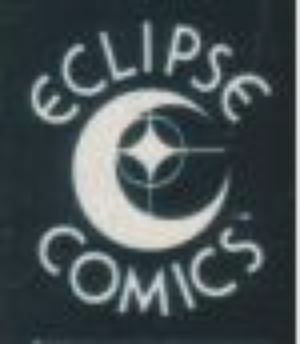
…I’ve got this idea for it. I…I.. I really want to..to…know whether you’d um…be willing to draw the book….(gulp)…for….nothing.” I just waited there with the silence hanging in the air, and Jack kind of rubbed his chin and said,” Yeah, sounds like fun.” Not even a semi-flinch. He got this weird smile on his face like he’d really enjoy sticking it to them, and then just said “yes”.
The book was called Destroyer Duck. Published by Eclipse Comics the first issue had a March, 1982 date. It was a satirical tale of a character held hostage by a large corporation and his best friend’s attempt to free him. The friend was Duke “Destroyer” Duck, a bad ass Punisher type in a furry feathered skin, and an orange beak. Kirby penciled the title story, the inking was done by Ruby-Spears artist Alfredo Alcala, in a florid style that didn’t quite mesh with Kirby’s hard edged pencils, but the finish was illustrative. Mark Evanier and Sergio Aragones premiered a character named Groo in the back-up story.
Because it was by Gerber and Kirby, it was filled with deliciously bizarre satiric ideas and storylines. For instance: Woblina Strangelegs, A wacky ventriloquist-dummy-lady; Vulpa Packer, the Battle-Ax, who looks like the love child of DeSaad, and Granny Goodness. Holmes the lawyer, who looks like Matt Murdock, but wears sillier clothes. Cherrie Jubilee, a tough broad with a red orb for a helmet; Brad Cogburn and his army of clones, and more Those were just some of the characters! The whole things chock full of madness.

Though it was planned as a one-shot, the book sold very well. After some prodding, Gerber continued the series with Kirby penciling the first five issues; being paid for the other four. The story was very funny, and very biting in its look at how large corporations trample everything in their path. Jack was also in a dispute with Marvel over original art return and his drawing seemed a little more pointed than usual. It was an angry series, despite the biting humor. Gerber explains:
“A good number of the jokes in the book are his. The “Grab it all, Own it all, Drain it all” slogan of Godcorp was his. The designs of the Godcorp complex were his and virtually all of the visual gags in that first issue.”
Jack explained further more philosophically;
“Steve is a very original kind of guy. A man who can make something out of a duck like he did can come up with something important. I think Steve is a fine writer.”
“And, even if it wasn’t Steve Gerber, I would still do the same thing. Because I feel that change has to be made. The comics may not be important to me, right now, but they are important. It’s important that all the media stay alive, so that the ordinary guy can get his chance, without having to pay some ugly price for what he wants to do. The industry could fight tooth and nail on that, and it could continue, but the chance that it could change is the important thing in pursuing Gerber’s case.”
A very mad book
Steve explained, in an interview;
TJKC: Did you get a sense that working on Destroyer Duck was kind of therapeutic for Jack?
SG: “Oh, absolutely! No question. It was like giving Marvel the raspberry for 20 pages. The whole idea of sticking this in their face was a major appeal of the book to Jack.” “It was one of the best experiences I ever had in comics, working on that book with him. He was one of the funniest and most talented human beings I ever met.”
Artist/satirist Scott Shaw reminisces about Kirby’s underlooked talent as a funny man.
“Most people tend to think of Jack Kirby in melodramatic superlatives. He’s been described as the ultimate comic book artist, a master’s master of graphic fiction, an incredibly talented creator of dynamic heroes, dramatic action and cosmic conflicts. Comics aficionados have dubbed him “King” Kirby (a title he wore with some discomfort), and have compared his work to that of Da Vinci, Rembrandt and Rockwell, among other artistic greats. He was, without a doubt, the single most imaginative individual ever to work in the field of comic books. He was equally comfortable working in any of the familiar comic book genres of super-heroics, romance, westerns, science fiction and war, among other dramatic themes. But Jack Kirby was also very funny as a writer, as an artist and as a person, and left behind a surprisingly large body of work to prove it.
One of the strangest paradoxes in comics is that most “straight” comic books (in such “realistic” genres as super-heroes, western, romance, war, etc.) are drawn in styles that actually bear almost no resemblance to truly realistic illustration! Yet, many fans (and even editors) of these comics turn up their noses at anything resembling the kind of humorous cartooning sometimes referred to within the business as “big-foot drawing.” In my estimation, Jack Kirby’s artwork somehow bridges this aesthetic gulf. Judging by life-drawings that he had done as a young man, Jack had always possessed a natural ability to work in a much more realistic style than that with which he is now usually associated. It appears that the exaggerated and dynamic anatomy, poses, design, composition and foreshortening that have become such a Kirby trademark may have been the result of a conscious aesthetic decision on Jack’s part.
One thing is certain, however; once he began his professional career (under a variety of pen names), no matter what the character or genre, whether the subject was serious or light-hearted, Jack Kirby could only draw like Jack Kirby and if humorous illustration could be described as an exaggeration of realistic art, then Jack Kirby’s humor work is nothing less than an even greater exaggeration of his normally exaggerated style!”
Lots of Destroyer Duck – even Frank Miller gets into the mix
Steve Gerber and inker non-pareil Alfredo Alcala
Buzz Dixon came on board towards the end of the run.
“Steve was suing Marvel at the time for possession of Howard the Duck. He had created a character and comic book called Destroyer Duck, which was among the first independent comics. Steve at one point was running into a little bit of scheduling problems, because he had too much on his plate at the time, and he asked me if I would write a short sequence just to help him get caught up in Destroyer Duck. So I wrote about a two-page fight scene between Destroyer Duck and a villain, I forget who the villain was. My first work in comics was illustrated by Jack Kirby!
Buzz went on to write the final 2 issues. By that time the case was over the character was absorbed into other titles that Gerber created. The book had run its course. Buzz always praises Jack Kirby,
“Jack was one of the nicest guys I’ve ever met. Just a great, great person, he and Roz were wonderful people. It was tons of fun.”
This next story starts way back in 1954. A young boy about 6 is out with his mother and comes upon a revolving comic rack and stares in fascination. On the rack are several of those new three-dimensional (3D) comics. He stares and rifles through the books. He shows his mother and asks if she will buy him one. He already has some comics so it’s not an unusual request. His mother looks and when she sees the EC 3D horror comics she blanches. Rather than the crime and gore, she picks out 3D Comics featuring Mighty Mouse, by St. Johns. The kid is spellbound; he had never seen anything like this. The amazing rodent is flying and jumping almost out of the book. This was an excellent choice. Originally created in 1942 as a movie short; Mighty Mouse was a parody of Superman.
He went through several mutations–beginning as Super Mouse– before becoming the mouse we all love. Mighty Mouse became the most popular of the many characters in Paul Terry’s studio. Not many could ever forget the stentorian operatic vocals of Mighty Mouse singing, ”Hereeee I come to save the dayyyyyy.” Opera and farce played a large part of Mighty’s oeuvre, even the constant villain; Oil Can Harry occasionally breaks into aria.
We have a hit
MM was a natural for comics with Timely producing a short run in 1946. St. John’s took over the license and started making comics in 1947 with Mighty Mouse soon their top selling book. It was no surprise that this character was chosen for their first 3D comic. Joe Kubert recalls;
“We produced two sample proofs with the 3-D effect, a panel of Tor and one of the Three Stooges. When we showed them to Archer St. John he flipped over the idea! We went to work on a Mighty Mouse book because St. John felt it would be the best vehicle for 3-D and get the best chance on the newsstands.”
The first book sold out. More were added. Mighty Mouse later became one of the earliest TV characters in 1955 when the studio was sold to CBS. The movies were just beginning to flood the market with 3D movies. Such great titles like Bwana Devil, It Came From Outer Space, and House of Wax, captivated the young man who became obsessed with the concept of 3D. One of his favorite comics was Captain 3D by Joe Simon and Jack Kirby-a wondrous example of the 3D concept. The 3D effect left Ray breathless. Young Ray Zone’s imagination and wonderment were on fire as he now searches out and collects any and everything he can find relating to 3D.

Ray came to this fascination as a consumer, but James Butterfield was deep into the nuts and bolts of the industry. Even as early as the 1950’s he was producing a 3D TV show down in Mexico. He invented several 3D set-ups to improve the quality of 3D pictures and films. In 1979, he started a new business called 3-D Video Corporation in North Hollywood. Ostensibly to transfer 50’s Movies into 3D films for TV showings, he also had plans for other 3D concepts. In 1981, he created 3D Cosmic Publications, a printing division of the parent 3-D corp. One of the first things he did was hire David Starkman for his sales team. A week or so later, he hired David’s wife, Susan Pinsky. It was a serendipitous 1976 visit to a garage sale that got their 3D spark going when they ventured upon an old View-Master. The View-Master was originally invented in the early 1900’s and first presented at the New York World’s Fair. It was a self-contained stereo viewing unit containing 7 pairs of stereoscopic pictures in a round reel that produced
Simply the best, bakelite and a designer’s dream
great 3D shots of scenic spots and entertainment shows. Marvel provided cells from their cartoons as photos for Stereo view. The 3D effect amazed them and they were instantly obsessed with the hobby. David and Susan joined the Stereo Club of So. California, they wrote a newsletter, and opened their own retail mail order business selling 3D paraphernalia to photographer’s, both amateurs, and professionals. At 3-D Video, David was put to work in the sales dept. selling 3D glasses and other trinkets to convenience stores and other outlets. But Susan was given another task. Mr. Butterfield asked her to gather and produce a 3D comic book that could be used as a primer and sales point for the 3D craze. He wanted this to be the best 3D comic ever. He envisioned this book to be sold at convenience stores with the accompanying glasses. This daunting task was the first attempt at a 3D comic in 25 some odd years and Susan decided she first needed a writer who understood 3D and possessed a writing style that could captivate the young readers. The young man from 1954 had now grown up into perhaps one of the most knowledgeable people on the concept of 3D. Ray was working at a large steel company in their art dept. On the side he was writing articles about 3D in various magazines.

From a 1989 interview, Ray recalls;
“I was writing articles freelance and had a couple of articles on 3D published. One was in the 11th edition of the (1981) Overstreet Price Guide and another, called Stereovisions, was in Fanfare Magazine. And that article was an attempt to create a single historic overview of all forms of 3D imaging, including photography, comics, holography, 3D movies, the whole thing. After that article appeared a lady named Susan Pinsky contacted me. She was employed by 3-D Video Corporation in North Hollywood, the company that was producing anaglyphic conversions of old 3D movies for television in 1982. She asked me to write a 3D comic book that would be a graphic history of 3D and hired me to create an original superhero that would be a vehicle to tell that history. After I hung up the phone talking with her, I jumped up and down for about an hour and a half.”
Ray already had a similar idea roiling around in his head. Until Susan had a workable script, she hadn’t decided on an artist. A couple weeks later, Ray gave her his script. Knowing his comic book history and remembering the great job on Captain 3D, Ray later suggested Susan get Jack Kirby to illustrate the book. She was happy, but when she showed James Butterfield the script he had some ideas of his own. He wanted his company and himself to play a role in the story so he rewrote the script and inserted himself in. Susan fought to keep all the historical items in the script. James and Susan finally hammered out the script and Susan set about finding Jack Kirby. This wasn’t too difficult as Jack was listed in the phonebook. Susan called up Jack, and told him a little about what she wanted. Jack shuddered thinking about the hassles making the earlier 3D book. Jack laughingly swore that even thinking about 3D comics caused him heart palpitations. Jack invited her up to his house where Jack and Roz charmed Susan with their graciousness and kindness. After hearing about the progress in technology, and what was needed, Jack quickly agreed and his salary and time was worked out. One good thing was that Susan was given no budget, she was told that whatever it cost; just charge it to the company. There was no dickering over his page rate, or unholy time schedules to work around. None of the usual comic book hassles. Jack was to do the work and turn it in as soon as possible.
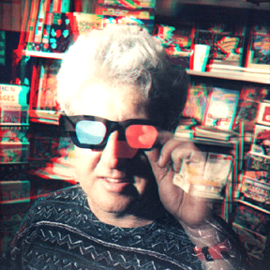
Ray enthused:
“A month later Susan Pinsky informed me that they had engaged Jack Kirby to illustrate my script. Then I was jumping up and down for about two days! I still can’t believe my incredible good fortune to have this absolute king of comic books illustrate my script. That was, and is still, just amazing to me. Back in the early days of 3D, in the 1950’s, he produced one of the finest 3D comics of them all, Captain 3D. I was amazed. I went to the president of the company, James F. Butterfield and told him I wanted to work there. He hired me to work in the 3D Cosmic Publications division, which was the print media side of the company. We produced the 3D Cosmic Poster, which was a preview of the comic and I worked on the creation of point-of-purchase displays and different aspects of the print media.

Jack was given the script plus a layout and asked to follow it as close as possible. For once Jack wouldn’t tear the script apart and rework the story to his own fashion. It was an easy job, only 17 pages plus a cover, bc and a poster for the stores. She had Jack Kirby supply the art for the glasses. He did at least 3 presentations before a choice was made. Mike Thibodeaux inked. The poster was actually printed in at least 2 versions, one for stores and another called 3D TV Cosmic poster which oddly credits Mike Royer as inker. Jack finished very quickly and turned the pages into Susan. Susan loved what he had done- not surprising since Jack’s natural style was a version of 3D drawing that he had perfected in his comic book work. He understood forced perspective and driving the action forward. Jack was also happy since he didn’t have to separate the bits into layers like they had in the 1950”s. With the artwork in hand, Susan hired a familiar face. The late Tony Alderson was also a member of the Stereo Club of Southern Calif. He was unemployed at the time, yet he was well versed in the 3D conversion process needed for the comic. Tony was a tall, lanky, mustachioed fellow, lovable but grouchy, given to answering any question with a negative response. Susan had learned that in talking with Tony a different approach was needed. She would ask every question in a reverse negative manner so when he said no, it actually meant yes. So rather than asking Tony if he wanted to work for 3-D Video, she asked if there was any reason he couldn’t work for 3-D Video. When he said no, she then asked him in her reverse manner. Is there any reason you can’t start tomorrow? Tony said no, and started right away. Ray Zone recalls;
“I first met Tony Alderson when I was hired to work at 3D Video Corporation in 1982 and it was Tony who converted Jack Kirby’s art to 3D in Battle for a Three Dimensional World. We have maintained an idiosyncratic dialogue with each other that incorporates Tony’s uniquely satirical slant on the vagaries of stereoscopic business practices.”
Tony explained the process he used.
“I take the drawing supplied me as the left image. I then simulate the right image by cutting apart copies of the drawing and reassembling them with the proper displacements to create retinal disparities when viewed.”

Ray sent a letter to Joe Kubert, thanking him for his part in 3D history and inviting him to partner up for a project. Joe kindly begged off with a note.
“However; I’ve always felt that the 3D graphic process is a viable procedure, if coupled with a good story and art. As a gimmick, it has no longevity (as sadly proven through past experience.)
About the comic book, Joe included a little message.
“A cosmic-comic book, huh? Great! You couldn’t have made a better choice than Jack Kirby, whose work has a tendency to look 3D even when it’s flat. Please give Jack my fondest regards when you see or speak to him.”
A 3D comic is complicated; because of the labor intensity it is a timely process, even with a large crew such as at Harvey Comics in 1953. A regular monthly book is out of the question. It only works on stand alone issues that are not time related to other books. It cannot be made as a regular part of the publishing routine. It is also a costly job due to the time and physical labor needed to transfer. It would bankrupt a company trying to do too many 3D books at once. St. John Publishing had learned this lesson the hard way. They paid the artists twice the normal rate when working on 3D. Not every printer was equipped to meet the specific needs of 3D. It was also a fad that tended to die very quickly at the marketplace. But this was not a problem for 3D Video. It was a stand alone book with no promised publication schedule and continuity. It was being worked on when the people were there, and finished when ready. This turned into a problem because Mr. Butterfield would often corner Susan, now editor-in-chief of 3D Cosmic Publications, and hand her a new project that required the artists, and graphic people on a priority matter. One such project was a set of glasses with 3D drawings on them for a chain of convenience stores to sell, or give away when some item was purchased. 3D Video also produced a set of 3D cards to go along with the movie, Jaws 3D for Topps. Susan and Tony as well as artist Barry Jackson worked on a 3D poster for the movie Friday the 13th Part 3. The comic work was back-burnered during these mini-crises. Among all the other projects, Susan says the book became an almost after-thought. Jack had done his work on a timely manner in late 1981, eventually, by late 1982, the artwork was finished and ready for the printer.
One looming problem, in late 1982, 3D Video was in trouble, their spending spree had caught up to them. The time of no budgets came to a quick halt. The company that bragged about cash flow and how well they were doing was suddenly cash poor. Yes they had taken in over 12 million dollars, but the new accountant told them that they had spent 14 million. The printer needed 6-7 thousand dollars up front to print the 100 thousand issue run. They found the up front money and the printer came through with 100 thousand copies, neatly delivered to their warehouse. Ray remembers this period;
“This was a cosmic book, by the way, it wasn’t a 3-D comic book–hyperbole was the real stuff of our day-to-day existence.”
So I worked there for about a year and in December of 1982 the Battle comic actually was printed and I was there at the printers when it rolled off the press. I have 3-D photos of the book being printed.”
Susan and the chosen inker, John Rupkalvis disagreed about the colors. She recalls;
“When it was printed Ray, John & I were there at the printers, but only John could approve the colors. We both strongly disagreed with his choices, but we were so happy to have it finally being printed that we had to go along with the situation.”
Susan thought they were too faded. Susan lost and some of her pride waned with the inking choices.
On Dec. 11th, Ray set up a comic book signing for Jack at a local comic shop—Ray supplied the books. Susan Pinsky and Tony Alderson accompanied Jack and a lovely time was had by all. The feedback was all positive and Kirby wowed the crowds. After the signing in Studio City, the Los Angeles Herald Examiner ran a newspaper article entitled, Pow! 3D comic craze is back—Cartoonist all smiles: New book a fast seller at (that’s right) $3 The article by Timothy Carlson features a large photo of Jack seated at a table containing many books, and art pieces, signing a book for a young fan. After a particularly shy 10 year old got a book, Jack turned to an older collector and said, “Look out for his generation! They’re gonna zap you!” Jack’s return to 3-D was questioned, Jack explained “It drove me crazy to do the painstaking overlapping of blue and red shading of the drawings (in 1953) this time I just did the drawings and I was happy to leave the rest to 3-D Video.” The flyer for the signing at The American Comic Book Company headlights the first major 3D comic book in over 25 years! But it also mentions his old books plus the new first issue of Silver Star. Also on the shelf were Captain Victory, and Destroyer Duck. Jack kept busy for a semi-retired comic book man. At $3, the book without a price got one quickly, though the other independent books were retailing at $1. Susan said that after the accountant added up all the costs, the books came to about a dollar a piece. 3-D’s marketing director, Linda Feldman boldly told everyone that Battle for a 3-D World would easily sell out its 100 thousand print run. Susan says the hyperbolic b.s. was a direct extension of Jim Butterworth’s personality. The article did make its requisite mistake when they credited Jack with creating Capt. Marvel.

Unfortunately 3-D Video went bankrupt, and the printer never received the remainder. Ray Zone was let go, and the next day Susan arrived at work to find the door sign taken down from her door. She was also let go, as were her assistants Roy Besser, and Mark Beam- both important parts of assembling the comic. The boxes of comics languished on the delivery dock never to be sent to the distributor.
But the story doesn’t end there. Shortly 3-D Video held an auction to raise money for creditors. Ray, David, Susan and a friend, Mark Ober attended this auction and went home with boxes of glasses, the boxes of comics, and other assets. Unfortunately they had no place to store the comics so they sat outside a garage for a period. Never let anyone claim that it doesn’t rain in Southern California. It rained and some comics were ruined. Susan did work out a deal with several Western distributors such as Bud Plant to take the books and distribute them to comic shops. After a year and a half, the public would see Battle For a 3D World.
After being let go by 3-D Video, Ray started his own company.
“In 1983 I started my own company, The 3-D Zone, which was to be, specifically, a company to convert flat, existing images into 3D, make 3D glasses, and do 3D printing.”
Ray was a hustler, always exuberantly looking for the next project. A year later Ray would hire Jack Kirby to create 3 posters of children at play. Jack actually drew four, but only three were chosen. These would be placed in boxes of Post Honeycomb Cereal. Mike Thibodeaux recalled;
“I did some presentation pieces, but I don’t remember if they were for Ruby-Spears or for some other company. They were some toy posters that went into cereal boxes. Nobody knows about these things, but I remember inking them. They were kid sports concepts.”
Ray Zone produced these posters for a cereal account. Ray recalls;
“I did a 3D conversion job with Jack Kirby for Honeycomb cereal. Jack drew great images of a kid on a skateboard, a baseball player, and a scene with a BMX bicycle. I sent down a proposal to Bill and Steve Schanes at Pacific with copies of the Honeycomb 3D sports action posters and a specific proposal for a 3D comic that had all the prices I was charging, including the glasses that could bind into the book. They got back to me in late 1983 and said they wanted to do a book (Alien Worlds 3-D).
When the Pacific book came off the presses, Schanes showed copies to publishers at Petuniacon, in Oakland. The people at Aardvark-Vanaheim were so excited they ordered their own 3D comic. Ray was a master at letting one project sell the next. Later, when Pacific was going through bankruptcy, the Schanes said that their 3D Comic had been a disaster. It was costly and never sold in the marketplace leaving them with bundles of expensive back stock in their warehouse; sort of a curse of the 3D comic. Ray Zone says that story is full of beans! He says Pacific had a quick 100% sell through of their initial 60,000 copy order, and they were so happy they placed a second order for an additional 20,000. Ray says he remembers because he had to manufacture the additional 20,000 glasses for the books. He thinks Schanes was doing some scapegoating. Ray Zone had made a name for himself. He would follow with over a hundred other comics, working with such luminaries as Will Eisner, Steve Ditko and Neal Adams. Ray added that yes it was very time intensive, but at his peak in 1987 he did manage a comic a month for a year or so, but the pressure got to him and he cut back to first bi-monthly, and then quarterly.

Susan’s memories of the Kirby’s are nothing but love. She mourned the passing of both Jack and Roz. She says he was the most professional artist she ever worked with and the most kind and gracious. She sent me a stereo photo of Jack, looking very trim and healthy working on a page. This photo was taken during a visit to the Kirby’s. As a present, Jack gave her a piece of original art which she had framed and is hanging in her living room today. It is with great thanks and respect that the author acknowledges the assistance and memories of the ever young, beautiful, bubbly brunet, Susan Pinsky, for her help in telling this story, and the inimitable Ray Zone for his recollections.
Postscript
In 1982, 3D Video set up a program where they were going to show a 3D movie on a local California station. The catch was that the viewers had to buy a set of glasses for a dollar at a local 7-11 store. This aggravated the heck out of late night host Johnny Carson and he spent a whole monologue railing against this practice. As a prop, Johnny walked out wearing a set of 3D glasses. It seems that by mistake, Johnny had received some 3D glasses from the release of Battle For a 3D World comic book.
Well, at some point, Johnny Carson did a bit involving the glasses, and it soon turned into a riff on the tagline on the glasses. (Kirby-King of Comics)

Carson was quite put off that this Kirby guy was calling himself the “King of the Comics” when he had not even heard of him, not realizing that “comics” referred to the books, not stand-up comedians. Carson asked Ed McMahon if he had heard of him. No, Ed, said. The bit went on for awhile, with Carson ripping Kirby the whole time, even going so far as to call him a con-man. Well, as you might imagine, Kirby, who coincidentally was watching, was quite displeased about this whole thing. So displeased, that he even got a lawyer involved. The lawyer calmed Jack down; they got hold of Freddie DeCordova, Johnny’s producer, who couldn’t have been more apologetic. Fans sent Johnny letters. Ultimately, things were resolved amicably, with Carson devoting time in his show apologizing to Kirby for his mistaken comments.

From June 8th 1982 Latenight Show;
“Now, before we begin tonight-we’ve been off for a week and I have to start with an apology tonight and I mean this sincerely. Remember a couple weeks ago, locally out here, Channel 9 had a 3-D movie and they sold 3-D glasses through stores to see the movie. They sold a couple million pair. Doc was wearing one of his rather loud outfits and somebody had given me a pair of 3-D glasses which I had in my pocket, so I took them out and was looking at Doc’s outfit and I started to talk about the movie, mentioning that over 2 million pairs of glasses sold.
First of all, I was wrong—the glasses I had were not the ones sold at 7-11. Those were glasses designed by the gentleman I’m going to mention in a moment, to view 3-D posters. Anyway, Ed, you were a big help to me that night because you said “Why don’t you read what’s on the glasses? Right, and it said, “These glasses designed by Jack Kirby- King of comics.
Now if you say to a comedian or an entertainer, “King of comics”, what’s the first thing you think of? The comics… comedians, guys who do jokes for a living. And the audience kind of laughed, because we had not heard of Jack Kirby-King of Comics. So when we said – I had turned around and said laughingly, “They made a lot of money on these glasses. Rather than King of Comics, Jack Kirby is King of Con-men.”
Well it shows you we don’t know as much as we sometimes think. (reading from letter) “Mr. Kirby is the king of comics because he has created, or co-created such classic comic book characters as Hulk, Captain America, Spider-Man, Thor, and many others. As a matter of fact, the main reference book on comics is dedicated to Jack Kirby, “without whom there would not have been any comics to write a history about.” (ends reading letter)
Anyway, having not met Mr. Kirby, who has a fine reputation as a comic book artist and creator, we are very sorry. We certainly did not mean it maliciously since we did not know the man and we thought it was some comic picking up a couple bucks making 3D glasses. This letter informing us came from a Mark E-V-A-N-I-E-R and he apparently is a comic book fan who saw our show and realized our error.
So, Mr. Kirby, if you are watching, we certainly didn’t mean to embarrass you or make fun of you.”
The sincere apology ended the whole brouhaha and Jack, in return drew a couple sketches of Johnny and Ed and all was forgiven.
Mark Evanier, in a blog entry wrote about a follow-up face to face with Mr. Carson showing his humble side.
“On one show a few years ago, Johnny inadvertently said some unkind things about one of my closest friends.(Jack Kirby) The details are immaterial except to say that Johnny had his facts mixed-up and didn’t know what he was talking about… and my friend was deeply, deeply hurt by the incident.
I phoned up Fred deCordova and explained the situation. He instantly agreed that a large apology was warranted and he told me that if I wrote a letter giving the facts, he would guarantee that Carson would apologize on the air. I did and, as advertised, Johnny did a long and gracious retraction at the earliest opportunity. It was so sincere, in fact, that several former Tonight Show staffers, phoned me to ask how I had arranged it. Did I have photos of Johnny with an underage goat or something?
Three weeks later, I was walking through the NBC complex, passing Carson’s parking space that is, sad to say, the high point of the NBC Studio Tour. Suddenly, a two-seater Mercedes pulled into it, the driver’s seat occupied by J. Carson. Guards were scurrying out to escort him but I was between them and him and at that moment, it didn’t dawn on me that I was committing any felony by stepping up to Johnny, introducing myself and thanking him for the prompt and civil apology. So I did.
My back was to the guards but I could tell that they were in a high state of alarm. Someone is approaching Mr. Carson! They may even have gone for their guns. Johnny waved them away and stood there with me, his arms full of papers and folders, chatting for maybe five minutes. He seemed genuinely thankful that I had gotten the correction in so promptly and without a lot of litigation threatened. He even laughed when I said, “Well, I thought you could do with a few less lawyers in your life.” I recall thinking it was one of those Bizarro World moments: Me making Johnny Carson laugh.
I was delighted he was so polite because, just as I wouldn’t have wanted my Tonight Show watching dampened by an unhappy experience on staff, I wouldn’t have wanted it despoiled by an ugly encounter with Carson. I’m sure he is capable of incivility. I’m just pleased I didn’t see it.
He shook my hand and thanked me again. And then he went in to do his show. And I went home to watch it.”
It doesn’t totally end there. In the mid-Eighties, Ray Zone had a local cable TV show called the Zone Show, where he introduced and interviewed local artists. On Oct. 10, 1984 Jack Kirby was the guest for a taped half-hour interview. Jack was in the studio with a large blue screen behind him. Ray Zone was conspicuously hosting off-screen. During the show a constant stream of Kirby covers were chroma-keyed to appear in the background. It created a most intriguing sight, of the animated Kirby talking with covers floating behind him. The interview stuck closely to Jack’s history and precious little was said about 3D.
Pacific followed up Captain Victory by signing up popular Mike Grell for a book called Starslayer. Mike says that he signed up at Pacific a few weeks before Jack, but Jack got his pages to the company so much faster that his book was published first. The Schanes noticed that there was still room at the back of the new book for a filler strip. They remembered the young man who had hung around their stores and he’d been working on Kirby’s drawings at the Comic-Con. When asked for a filler strip, Dave Stevens agreed and came up with The Rocketeer. Both were very well received. The Rocketeer would be the unqualified hit of the year and the strip that finally put the independents at the fore. It was so big that Marvel reached into their bag of tricks and found a small one-use background character in a long forgotten Daredevil book named Rocketeer. They threatened legal action trying to attempt the strip’s cancellation: typical bullying tactics. The suit ended when Disney expressed interest in the Rocketeer as a movie project, and scared Marvel away.
Kirby’s Kids
John Pound – Scott Shaw! – Dave Stevens – Mike Thibodeaux
During the threatened lawsuit, Kirby was constantly bolstering Dave, Jack volunteered to give depositions or other ways to help out. Jack was very proud of Dave’s success. Dave recalls;
“Jack was kind of proud when any of us snotnoses did something with ourselves later in life. When we were all high-schoolers visiting the house, they probably had no idea any of us would take it further than just a hobby, and I think when Scott Shaw and myself, and John Pound and a few of the other guys actually made a career of it, that kind of tickled him in a lot of ways.”
Even the reclusive Steve Ditko contributed a strip called Missing Man. Pacific was making a name for itself. Mark Evanier and Sergio Aragones contributed Groo, the Wanderer. (after the first appearance in Destroyer Duck)

There were some complaints about the coloring on the early issues of Captain Victory.
To some, the series looked muted and dull; it lacked the dynamics to match up with Jack’s pencils. The Schaneses chose Steve Oliff as the colorist for flagship titles Captain Victory and Starslayer.
Steve recalls in an essay posted on his olyoptics.com website:
“It was the first time I’d tried flat, coded, hand separated color. I had visions of doing flat color like it had never been done before by using some of the full-color tricks I’d learned on the Hulk and Moon Knight. I even went so far as to add Zip-a-tone [pasted-on dot patterns] to Jack’s original art on Captain Victory #1 to get the added tonal values. My good intentions aside, the coloring came out dark and muddy rather than dramatic and moody. It [Captain Victory] wasn’t the best story Jack ever wrote, and I’m afraid I really wasn’t giving it the look he wanted, so he fired me. I’ve never really been comfortable with flat color. Even though it was a shock to be fired by a boyhood idol, I probably deserved it”.

The sales were good, but the reception was very mixed. Many complained of Jack’s explosive dialog—right out of the Forties. Other saw the plot as childish—more consistent with Saturday cartoons than as a comic book fighting for space with Miller’s Daredevil, or the young guns over at Marvel. The Goozlebobber strip was almost incomprehensible. Jack’s over the top heroics seemed simple-minded and farcical in a world grown cynical by Gov’t villainy and third world atrocities.
Some complained that the storyline was too close to Jack’s themes in the Eternals, or the New Gods. Jack replied that Captain Victory was a “kind of warning”. “I think there’s a complacency among the young. Sometimes we go overboard on trust.” As an example Kirby cited the optimism found in Spielberg’s Close Encounters of the Third Kind. Kirby felt that “Spielberg’s vision of the benevolent aliens was as far off-base as the peaceful greeting they received from the American military and Government advisors.” Still he worried about the tigers at the gate.
Next Jack Kirby offered up another sci-fi strip called Silver Star. This was originally meant for a screenplay, but Kirby retrofitted it into comic format. This was a dark tale of genetic engineering and science gone bad. A rogue scientist Bradford “Cowboy” Miller has injected several expectant mothers with a “genetic package” designed to create a new breed of human, Homo Geneticus, which can survive the coming nuclear holocaust he expects. One of Miller’s test subjects is his own son Morgan, whose immense powers emerge during a firefight in Vietnam and who must wear a silver bodysuit for his own survival, to contain his energy. Morgan battles against another recipient of his father’s genetic treatment: Darius Drumm, a preacher’s son who leads a “cult of self-denial,” and attempts to kill off other members of Homo Geneticus (including a circus strongman, a female stunt driver, and ghetto hero Big Masai), and plots to destroy the world
Kirby slipping and dark edges take over
There is also a Christian fundamentalist vibe from the villain Darius Drumm – the mutant leader of a cult of fanatics. Drumm’s purpose is even more insidious than Darkseid’s as his raison d’etre seems to be destruction of humanity, not blind obeisance. Big holes in the premise and continuity show how a slower more purposeful Kirby could have improved his work. Sometimes his mind raced too far ahead of the pencils. Even this late in his career, Kirby’s concepts and visuals still possess extraordinary vitality, and his storytelling has a wild, rollicking momentum. Unfortunately his concepts were not nearly as well realized as his graphics. Jack had reached a point where the two aspects of his genius no longer meshed smoothly.. His imagination could not come up with concepts the equal of his artwork. Perhaps Kirby’s most nihilistic comic, the viewpoint is gloomy and desolate. It had a cover date of Feb. 1983. Mike Royer returned to ink over Kirby thanks to an animator’s strike that freed up his time. D. Bruce Berry finished up the last 2 issues after Royer returned to Disney. Mike Thibodeaux and Richard French provided a back-up strip named The Last of the Viking Heroes in several issues.

Mike talks about Kirby’s role in creating the Viking Heroes;
“I was trying to come up with a concept of my own, and he kept saying, “do something you love” “What do you love?” And I thought the Vikings were the coolest guys ever! They were the ultimate adventurers. Traveling all over the world, with their incredible, mythical gods. The visuals have such endless possibilities. Most importantly, it gave me the opportunity to draw scantily-clad women. He (Jack) was more of a mentor in showing me the importance in pursuing things you are passionate about; don’t try to follow formulas. Formulas can sometimes create barriers for the imagination. Along with this advice, he also drew three Viking Heroes covers for me.” Jack even drew a sketch of Captain America shouting “Don’t say it, Mike! Do it!” for encouragement.
Scantily clad women and some Kirby covers
Meanwhile, Jack was commissioned by a comic shop owner/friend to write and draw something biographical and personal for a magazine he was publishing named Argosy. The publisher was Richard Kyle, who owned a book store in Long Beach, Cal. He had met Kirby at the San Diego Comic Con. It seems that everybody met Kirby at the San Diego Comic Con! While sharing a table with Jack and Roz at a post-Con awards banquet, Jack told a poignant tale of his childhood, and Richard asked Kirby if he would draw it for his new magazine enterprise. He promised Jack that he would print directly from the pencils with just a muted back wash to give an antiquated feel to the story. Kirby agreed as long as the colors were muted and dreary. As Jack said “they weren’t colorful times”. Jack reached back to his early childhood and drew a short 10 page story about a boy trapped in a hellish nightmare of hurtful taunts and youthful gang style camaraderie and fighting. Street Code embodied all of Kirby’s childhood fears in a coming of age story of a sensitive youth wanting to escape the shackles of the ghetto. The exuberance, the struggles, and the dreams of his early life came to life on those pages in as dramatic and unvarnished imagery ever done by Jack.
Richard Kyle – new printing
This was Jack in all his glory unfettered by colorful costumes, super villains and the other accoutrements of the comic stories he had drawn the last 40+ years. This was Kirby ripping off scabs, and wrestling with his inner demons, this was Kirby the “artiste” finally coming out. Unfortunately he never followed up on this. It remains a shadow image of what Kirby might have done-should have done. Due to financial troubles, Kyle had to drop the project. And Jack’s masterpiece was tossed on a shelf.
Temperamental artists were wrecking Pacific’s schedule. Neal Adams had promised a regular series named Ms. Mystic, about an ecological Goddess of Vengeance. The strip first appeared as a back-up strip in Captain Victory to good reviews. But after that it would be months before more pages came in for the promised premiere issue.

Street Code spread – Kirby’s close quarter neighborhood
And another six months before the second was available. Series couldn’t get a toe hold due to long waits. Dave Stevens, ever the perfectionist couldn’t produce Rocketeer fast enough for a regular series. The Schanes personal love for Gothic style horror convinced them to publish several series of these books by people such as Berni Wrightson and Bruce Jones. Unfortunately the market didn’t respond and the sales were sluggish. The roller coasting racing upward had reached the top and caromed wildly downhill. The Schanes managed to keep the presses rolling, until they made a mistake, like Al Harvey two decades earlier, they decided to publish a 3D comic. The result, Three-Dimensional Alien Worlds was a very good book, with art by Dave Stevens, Jon Bolton, Art Adams, and others, but the sales were disappointing, and much inventory began accumulating according to Steve Schanes. Neal Adams created a dreadful one shot book called Skateman, which almost bankrupted the brothers. Other outside pressures began to build such as outstanding debts from some of their biggest accounts that caused a horrible cash flow problem. The books were doing ok, but the distribution end was killing them. Mike Grell, seeing the end coming took his Starslayer to another publisher. Mark Evanier took Groo, and Dave Stevens took his Rocketeer to competitors. A snowball effect took hold and slowly the money stopped coming from the Schanes, Kirby, still doing his animation work simply pulled the plug on the books in late 1983. It was a short but ultimately profitable venture for Jack. Mike Thibodeaux remembers;
“I remember I did a couple jobs for Pacific, and they stopped paying. I think they were in financial trouble at this point. But they always took care of Jack; he was always paid up front.”
By late 1983, Pacific closed shop, one of many casualties that made up the independent comic publishers of the ‘80s. The good thing was that Pacific showed that creator owned strips were viable, and that small publishers could compete against Marvel and DC. It forced the big companies to adopt new policies allowing the creators more independence and reward for their work.
Jenette Kahn – Graphic Novel Hunger Dogs – Super Powers Mini series
The time at Pacific had kept Kirby’s name in the public. And the big companies saw the writing. 1984 looked to be a banner year for Jack. DC had come a callin’ and the news was good. After Jack had left DC in 1975, Carmine Infantino was let go shortly after. The new publisher was Jenette Kahn, the new industry wunderkind.
At only 26, she was the youngest person to ever head up a comic publisher, and the first woman. One of the first new books she assigned was the return of Kirby’s New Gods. She says she had seen the sales figures for the old books, and they shouldn’t have been cancelled. Soon after the rest of the Kirby cast made appearances in other DC titles. Darkseid was upgraded to a major DC villain who would circulate among the assorted DC books and cause mischief wherever he went.
It was under Kahn’s tutelage that DC had regained footing and began a long step back to respectability. For good or ill, Kahn is renowned for transforming comics from a children’s medium to a visually stylish and sophisticated art form for adults. Writer’s such as Alan Moore, and Neil Gaiman brought their talents to comics. One of her most important features was to champion the idea of graphic novels, creator owned properties, and high profile mini-series. After a contentious competition, DC had also arranged with toy manufacturer Kenner Inc. to produce an expanded line of action figures under the umbrella title Super Powers. Sensing a lack of quality villains, Kenner and DC agreed that Darkseid should be included. With the addition of Darkseid, other Fourth World characters were soon added.

Kahn also instituted better agreements with the creators. Though Kirby’s characters were already part of DC’s Universe, Kahn thought it only proper to make sure Kirby would receive royalties for these figures. Kirby would also produce some artwork for the packages. Kirby, though no longer active with DC was still the single most talked about creator at the assorted Cons. One of the most often asked question of the DC execs was “when is Kirby going to finish his New Gods storyline?” In a meeting at the swanky Beverly Hills Hotel Kahn approached Jack with an offer, “if we reprint the New Gods, will you finish your tale? Kirby was still stinging from the abrupt ending to his Captain Victory series but he agreed. The first step was a new establishing story that would appear as a last story in the reprint titles, and then Kirby would do a larger, graphic novel that would wrap up the story. It was also announced that Kirby would oversee a new mini-series called Super Powers where most of DC’s iconic heroes would take on its most iconic villains. This mini-series would tie-in to the new action figure line produced by Kenner. A new cartoon show also carried the Super Heroes logo
The new books turned into an artistic fiasco, maybe not financially. There really was no way that Kirby could wrap up the Fourth World story in one book. So Jack ejected Mister Miracle and the Forever People and concentrated solely on the battle between Darkseid and Orion.




The new story tacked onto the reprint book was dense and excellent. “Even Gods Must Die” ends dramatically with Orion being cut down in a blistering hail of weapons fire. Kirby’s vision shows Orion with huge chunks being blown out of his body. The page was disturbing in its horror and display of destruction. It was always Kirby’s plan for one of them to die, though he did say that a father would never kill a son. Yet for the graphic novel, DC nixed that idea because they wanted the characters to remain available for other stories. So in the Hunger Dogs, Orion was rejuvenated by Himon’s miraculous mother box, and with the help of the lowlies on Apokolips, defeated Darkseid, though he managed to escape in the end, not unlike Darth Vader in Star Wars. Without the dramatic finish Kirby had planned, the story more or less petered out to an anti-climactic nothing; not much different from the ugly, anti-climactic fall of the Soviet Union years later- not with a bang, but with a whimper. No one was thrilled but it was done. The artwork was reformatted several times and with each change different inkers became involved, and the artwork was a mess. Greg Theakston tried but couldn’t connect the dots. Kirby’s draftsmanship was not at a peak, and no amount of fixing made the art of a high quality. It was cartoonish rather than dramatic, and the story was a cut and paste disaster. Not a fitting way for an epic to end. But it was done and the project was brought to a finality of sorts. Kirby was well paid plus DC started sending him royalty checks.
Kirby gets a little wordy – One last crack at glory

The San Diego Comic-Con was aghast! For the first time it would have to go on without Jack Kirby as a headliner. The word came down that Jack had been in an auto accident and was home recovering. The truth was much worse. Jack Kirby had had an heart attack. He was hospitalized and set up for bypass surgery. Jack was scared that if Ruby-Spears found out they would let his contract run out and Kirby would lose his job. A cover story was worked out and his work was told that Jack was in an auto accident, but was well and recovering. Never had Kirby been so relieved to have switched from freelancing for comic companies to full time status as an employee with an animation house-complete with medical insurance. The old set-up would have bankrupted him. Kirby recovered quickly.
Kirby finally gets the chance to do DC characters too late
Greg Theakston was a Detroit boy who migrated east to New York after high school to seek his artistic fortune. He found a home with Neal Adams at the Continuity studio, working at inking backgrounds, clean-up and whatever job Neal had available. He graduated to penciler, and colorist and became part of the Crusty Bunkers art gang. He also started doing commercial work as a cover artist for paperbacks and magazines. He became a regular contributor to Mad Magazine. Greg’s other passions were as historian, working endlessly gathering all he could of the early comic history, and as an art restorer cleaning up old comic art. He met Jack Kirby while in New York and slowly became one of Jack’s trusted insiders. He became a regular inker over Jack Kirby in the mid-Eighties, working on the Super Powers line. It was his job to try to blend Royer’s, and Bruce Berry’s inking on the graphic Novel Hunger Dogs—a most thankless job since no one could ever find a happy medium on that art. Greg continued at DC inking Jack’s pages on the Who’s Who series of books. Greg was also a highly respected painter who painted several of Kirby’s drawings for comics. He would also become a trusted friend and art assistant to Jack when he was fighting to get his art back from Marvel. Greg would go on to produce many volumes detailing the history of Jack Kirby, first in his Jack Kirby Treasury parts 1 and 2, later in his Complete Jack Kirby volumes, and his pair of Jack Kirby Readers. Jack was also a large part of his Sunday Comics, and Pure Imagination anthology books. Perhaps the best Theakston publication was the reprinting of Roz’s wonder book of Kirby sketches of practically all of Kirby’s creations. Greg named this Heroes and Villains. Greg is also writing a Kirby biography called Jack Magic.
Greg Theakston – Pure Imagination
On October 7, 1985, four hijackers from the Palestine Liberation Front took control of the cruise liner Achille Lauro off Egypt as it was sailing from Alexandria to Port Said, Egypt. Holding the passengers and crew hostage, they ordered the captain to sail to Tartus, Syria, and demanded the release of 50 Palestinians then in Israeli prisons. Among the hostages were Leon and Marilyn Klinghoffer.

The next day, after being refused permission by the Syrian government to dock at Tartus, the hijackers singled out Mr. Klinghoffer, a Jew, for execution, shooting him in the forehead and chest as he sat in his wheelchair. Jack knew Leon Klinghoffer, as a boy in the BBR. Leon was the business manager and staff photographer for the BBR’s newspaper. The story is told that the hijackers made disparaging remarks about Klinghoffer being a Jew, and Leon spat in one of their faces. They shot him and dumped him overboard. Leon’s body was recovered a week later and returned to New York for burial. Klinghoffer never forgot the times spent at the BBR. And was a regular benefactor for years and years.
Jack’s good friend gone too soon
Jack would get misty eyed whenever he recalled Leon.
“But this fellow Klinghoffer who you may have read about in the papers, he was killed by the Arabs. I was raised with him. Now the Arabs had machine guns on him right? He didn’t give a damn about the machine guns. He probably walked over and cursed ‘em. Told them not to push women and children around. Which was a terrible thing to do to my generation, see? And he reacted, and of course he suffered for it. So it’s something that you just can’t help doing.”

By 1985, Jack was busy assisting on cartoons like Mr. T and Chuck Norris Karate Komandos; mostly providing weapon and machinery designs. One of the fonder animation efforts was a collaboration of three greats. The Centurions Power Xtreme was created and designed by Gil Kane, Doug Wildey, and Jack Kirby. Thematically it was a copy of every Kirby team unit ever created, it even had the elemental aspect Kirby reused often. It was sort of an updated Challengers of the Unknown, with a sea expert, a flyer, and a ground warrior. They operated out of an orbiting headquarters named Skyvault, eerily similar to Brother Eye from OMAC. It later added an energy master, and an Indian Infiltrator.

The original story arc was a 1985 five episode mini-series. It was hard-edged sci-fi; dynamic and explosive. The result was positive and the next year saw 60 full episodes. This series ran daily between Sept. and Dec. 1986. Led by feisty Crystal Kane, the team featured three men of different disciplines who donned exo-skeletons to fight the cyborg legions of Doctor Terror. The animation was done by the Japanese studio Sunrise, which was common for that time. DC came out with a short 4 issue comic series that died soon. Kenner Toy Company released a series of action figures to tie-in with the cartoon. These figures looked like a blending of Star Wars and Legos, as the main figures had holes – or ports – which allowed the suits and weapons to snap into.
Typical 80’s action figures
Stan Lee had stood astonishingly quiet during the fight for the artwork and Kirby noticed. It bothered Jack, and many fans that Stan had gotten his sweet deal from Marvel but wouldn’t speak up for his old partner. Gary Groth, editor of The Comics Journal in a panel discussion talks about getting Stan Lee to comment on the art dispute. Groth:
“Well we tried to contact Stan Lee for the story that appeared in CJ #100 and as soon as we contacted his office in California, they instituted a new policy that Stan Lee wouldn’t give interviews”.
The audience laughed at the thought of the ever loquacious Stan Lee not giving an interview. Their relationship had reached bottom and would never be repaired. Marvel refused to even talk to their lawyer, and negotiations broke off. To add insult to injury in Variety Magazine dated March 6, 1985 was an ad touting an upcoming movie from Cannon Films featuring Captain America. In the credits it says that the film was based on Stan Lee’s Marvel Comic strip character. Jack was so incensed at this snub that he contacted his old partner and together they had a lawyer contact the studio to correct the credits immediately or face a lawsuit. When asked about it, Stan gave his usual “some unnamed advertising guy mistakenly credited him” spiel. With Stan it’s always someone else who mistakenly gave him all the credit.
The fan media got wind of the artwork dispute and talked of boycotting Marvel unless they gave Kirby back his art-sans waiver. Petitions were circulated and many major artists and artistic guilds sent letters of protest to Marvel. Jenette Kahn of DC sent a particularly scathing letter in support of Kirby
To the Comics Journal,
It is a sad history. During the first three decades in our industry, comic art was destroyed by all the major companies because they were insensitive to even the personal value of the work and unconscious that artists had any rights in it. By the late Sixties, as protests grew, the majors ceased to butcher artists’ pages, but hoarded them instead in warehouses.
In 1973, DC acknowledged what should have been true from the industry’s beginning and what is true for all other magazines and periodical literature. We, the publishing houses, are paying only for the right to reproduce the work. The ownership of the page, the actual object, belongs unequivocally to the artist, and the artist alone.
We emptied our warehouse, searching out artists who had not worked for DC in years. In 1978, DC became –and still is—the only major comic book company to guarantee in every contract written for every piece of work the return of the original art. We also were the first and only to guarantee payment if the artwork we had in our custody was damaged or lost.
Jack Kirby is one of our industry’s greatest innovators and contributors. We are all in his debt. His artwork, like that of all the hundreds of other artists who have received their pages back from the publishers, is his morally and by industry practice for the past twelve years.
There has never been a time in those twelve years that we have singled out any artist and attached different conditions to the return of his art. We cannot imagine a circumstance in which it would be appropriate or ethical. Ownership of artwork is absolute and therefore cannot be subject to negotiation.Jenette Kahn, Dick Giordano, Paul Levitz
Will Eisner wrote a poignant and passionate plea to Marvel for his former studio mate and friend;
Gentlemen,
I have been following the public debate over your refusal to return Jack Kirby’s art. I have read with growing dismay the details and surrounding rhetoric.
This matter has gone beyond whatever legal merits there may or may not be to your position.
By your public intransigence you are doing severe damage to an American cultural community that is now emerging from the dark years of trash and into an era of literary responsibility.
It is important to those of us who devote our lives to this important art form to know that we have certain inalienable moral rights and that these are respected by the publishers.
For the sake of protecting the standards of this profession—not to mention your own reputation—I urge you to return to Jack Kirby all his original art AND DO SO PROMPTLY AND FAIRLY.
A whole new generation of creative people are watching your conduct. Don’t fail them.
Signed
Will Eisner
All Jack ever wanted to do was sign the same waiver as every other Marvel artist had and get his birthright returned. Kirby had reached an age where he wondered about his legacy, and he feared signing the waiver might just erase any remaining trace of Kirby to his Marvel creations. His financial legacy was also a concern. Original art had become a major collectable, and prime pieces were bringing major bucks. This would help Jack leave a nest egg for Roz should he die.
Center of attention
The newfound celebrity caught Jack by surprise. He was a solitary man in a solitary business, staring alone into a blank white sheet, drawing on his own imagination to fill it in. This attention rattled his somewhat. He was happy for others to take up his cause, but still not used to outside help. “He explained. “ I’m from the old school. I’m from a generation you fellas know nothing about. I ask nobody to do anything for me. If they feel like writing a letter, fine, if they don’t, it’s still fine with me. I’ll continue my own fight. It’ll go on because I want it to go on. If it stops, it’ll be because I stopped it. I ask nothing of anybody.

In an interview from The Comics Journal #105 with Tom Heintjes, Kirby makes a most eloquent observation:
“The strangest part about all this is that the people who make the sales are at the bottom of the heap. There’s a caste system whereby the people who sell the books are treated with contempt. The publishers aren’t doing good business. The sales don’t come from the executives. We’re in a visual medium, and the sales come from the artists.”
Darkseid after Hunger Dogs defeat – old habits DC characters
The Super Powers action figures were a hit, and several other Kirby figures were added in for a total of 11 characters available in stores near you. The Super Powers tie-in comic series was a low point, Kirby had no real feel for DC’s other heroes and the plot was old hat and silly. Kirby did draw the final issue, but it was a mess. A year later, the Super Powers series was continued with a new 6 issue story arc named #2. This was penciled by Jack, from a Paul Kupperberg script and it’s no more coherent than the first series. There were more Kirby creations in this tale as they were spotlighting the new additions to the action figure line. It was fun to see Kirby draw Wonder Woman, and Green Lantern, and Dr. Fate, but his skills had diminished to where the drawings were weak, and distorted. They lacked any of the grandeur one wanted to see in a Kirby comic. Except for an occasional issue, or cover, this was the last work Jack did for DC.

It allowed Kirby to end his DC time on an upbeat note. Gone were the memories of Jack Schiff and Mort Weisinger, or Carmine tearing his heart out. Kirby rarely ever had anything negative to say about DC, He thought his recent treatment there was superlative. He gave the best he had and they responded with love and respect. When asked about any future plans with DC Kirby replied: “DC is the kind of an outfit I would do it for. Everybody there has been wonderful to me.” He said that if given the chance he would like to bring the Forever People and Mister Miracle to conclusions as well.
The annual Comic Con led to a well attended meeting of the old and the young, as Golden Agers Bob Kane, Jerry Siegel and Jack Kirby and wives spent the evening with young Hollywood’s Bill Mumy, Miguel Ferrer, and Mark Hamill, comic geeks all. It was a good time for all despite the crotchety old Bob Kane trying to one up Billy Mumy’s old TV show Lost In Space. Any time the old artists got together was a fun time since time was catching up to all of them. Hamill never forgot that night.
“We were just so happy to tell these guys how much they meant to us. When they were actually working, comic books were not something you bragged about being involved in.”
The new meets the old

The problems with Marvel were escalating. An episode of the TV show 20/20 featured Stan Lee as guest, and during the show, Stan was credited as the sole creator of all the Marvel characters, with no correction from Stan. Jack’s simmer was reaching a boil. In interviews Kirby’s anger had concretized into absolute derision of Stan Lee. Jack would actually claim that Stan never wrote anything nor collaborated on any of the Marvel characters with Jack. Kirby’s claims were as false as the one’s made by Stan, but it was the only outlet available for Kirby to keep his legacy alive. He had no panting media like Stan, he had no position of strength like Marvel, all he had was his own grit and the love of the fans. There were constant clashes between Marvel execs and comic creators, and fans on Kirby’s behalf. Kirby’s good friend Mark Evanier had risen to a position of reverence as both writer and historian with the fans. Once to a journalist he said. “At the point the so-called Marvel Age began with the Fantastic Four #1, Stan had been in charge at Marvel for twenty years. And while he’d written countless stories, have you ever heard anyone single any of them out as “well written”? Implied was that Jack had been creating new characters, new concepts, and even new genres for those same twenty years prior to his work at Marvel. Plus he continued after he left Marvel while Stan Lee never had any successful creations after the split with Kirby. Roz put it more succinctly: “Jack created many characters before he even met Stan. He created almost all the characters when he was associated with Stan, and after he left Stan, he created many, many more characters. What has Stan created before he met Jack, and what has he created after Jack left?

As the conflict grew, so did the demands, when one side added in another demand, so did the other. Marvel went public claiming Jack wasn’t negotiating in good faith, that they were willing to return Kirby’s art, but that Kirby was making claims as to the copyrights. Jack would state that he never ever made any claims as to the copyrights. The low point might have been at a San Diego Comic con panel discussion, Jim Shooter interrupted the proceedings to challenge Jack about the conflict. This so enraged Roz, that she got all up in Shooters 6’10” grill, pointing her finger and finally shamed him into leaving. Shooter became the target for all the public outrage, and other Marvel execs noticing the perceived weakness organized an ouster. After the dismissal, some Marvel employees hung his image in effigy.

While Shooter was in charge at Marvel, some major artists, such as Frank Miller, Steve Gerber, John Byrne, and Gene Colan had refused to work for Marvel. Some of this was outrage over the treatment of Kirby, some not. In May 1987, after over 3 years of dispute, Marvel and Kirby finally reached an accord, and Marvel returned Kirby’s artwork. The quantity was a little over 2,100 pages, roughly one fifth of the estimated 10,000-13,000 pages Kirby had drawn for Marvel’s Silver Age. Amazingly, Marvel has slowly been finding and returning Kirby’s art—even though they have claimed that had no more—for the last 20 years. As a final parting shot, Marvel refused to even insure the shipment; just Marvel being petty to the end. Mike Thibodeaux and Mark Evanier helped Jack sort out the treasure trove. It was a welcome sight when those boxes of art arrived. Mike said ‘He was standing there, holding the splash to Avengers #7 and just staring at it for the longest time. You could see he was into it. He was into what he had done, which I’d never saw him do.”
While looking over the stash of pages, Kirby grew wistfully quiet. All the marvelous pieces of work in front of him forced him to face the totality of what he had accomplished at Marvel. Something he was loathe to do as a rule, he was hardwired to look forward, looking backward seemed a waste.
The return of the artwork wasn’t the end of the conflict. There were still matters regarding credit. Jack wanted the same simple credits on his characters that Stan Lee was getting. In an interview, Roz hissed at the reporter. “Tell them the Kirby’s never stop… there’s still a lot of things to be worked out” Their lawyer Greg Victoroff made it plain. “The issue of credit is separate, and has not been resolved. In fact, it’s rearing its ugly head right now.” (This was during the fight for proper screen credits for the Cannon produced Captain America film that mistakenly credited Stan Lee as creator)
In the same interview, Jack talks of the possibility of an autobiography, which Marvel wanted to limit the discussion of the company to a very small aspect. This after the original art demand prohibited Jack from writing a bio. Roz explained; “Under the old agreement, Jack had to go to Marvel for permission to do his biography.” His lawyer further explained. “One point that came out in the new agreement was that Jack was free to refer to Marvel in a “non-prominent” way. We can’t use Marvel’s name to promote or advertise the book.” Not that that would ever have been a possibility. Just as Jack never wanted Marvel to use his likeness, he certainly never planned to use Marvels. This becomes so hypocritical when one looks at all the archives and reference books Marvel put out with Kirby art as the central selling feature after Jack died. But this might explain some of the odd choices made on the published biographies which show no connection to Marvel.
The best thing about the article was that in referring to the onerous conditions originally made by Marvel as to the handling of the artwork, and the mentioning of anything regarding copyrights, it made clear that the new contract had deleted them. Victoroff made clear; “Jack got just about everything he wanted.” Including the right to sell his art, and be left alone by Marvel. Jack had now secured his legacy with a large cache from which Roz could continue to survive on.

Kirby had recovered from his bypass surgery, but minor problems and mini-strokes plagued him. Was he ever thankful to be working for an animation house rather than freelancing! Jack told Evanier, “If I weren’t working for those guys, I would have lost the house.” Evanier told a panel audience: “Jack had a very secure life in the ’80s. He had a house, a steady paycheck, health insurance, and he was out of comics, all thanks to Joe and Ken.”
For the rest of the Eighties, Jack enjoyed a semi-retirement. He was often called on to provide spot illustrations for DC’ Who’s Who series, or an occasional cover, and several pin-up pages in friendly independent comics. Mike Thibodeaux started up a new series featuring his Last of the Viking Heroes concept. He used the three covers that Jack had provided, plus Jack helped occasionally with plotting. Mostly Jack was content to attend various comic cons and bask in the adulation his career commanded. His house had become a magnet for every fan who wanted to simply tell him how much he was loved and admired. Greg Theakston’s ode to Roz, Heroes and Villains finally saw print.
Jim Shooter, perhaps apocryphally tells of a surreptitious meeting of Jack Kirby and Stan Lee. This occurred during the art fiasco and I have never heard it verified.
“In 1986, again at San Diego Comic Con, I met with Jack. After that meeting — both Jack and Roz were there — I said, “Y’know Jack, we’re having our 25th anniversary party tonight. It would mean a lot to me if you would come.” He said he’d see, and Roz didn’t look too happy about that idea. Anyway, the party’s in full swing in this huge hall in the U.S. Grant Hotel. Stan and I are standing way in the back, fairly near the doors. All of a sudden I look up, and in the door come Jack and Roz. I ran over to them and shook his hand and escorted them over to where Stan was standing.

I have to tell you, it was Stan Lee’s finest hour. Just a moment before they arrived– you know how Stan does the big gesture sweeping his hands around? He had a glass of wine in his hand, and he whacked it against a pillar, and the glass broke, and his hand was slashed; he was bleeding buckets. So here’s Stan; he’s got his handkerchief pressed over his right hand, bleeding, probably going into shock, and I walk Jack over. Jack sticks out his hand, and this panic goes over Stan’s eyes. He sticks out his hand, and Jack shakes his hand — and then Stan has to wipe the blood off of Jack’s hand with his handkerchief. He’s clutching this handkerchief in his right hand, having this conversation with Jack, and it was a really cool moment.
Obviously these guys hadn’t had a real chat for a long time, and I felt privileged to witness it. With Roz impatiently hovering nearby, and Shooter anxious to referee, Lee and Kirby danced around each other. “Stan was saying, ‘Gee, I really want it to work out,’ and, ‘Jack, I don’t have any control over this corporation. I miss the old days. I just want things to be good,'” Shooter said.
“Jack was responding in kind. So, Stan says, ‘Why don’t you come over to the house sometime. You know my number. I know yours. If I call you, will you come see me?’
“Jack says, ‘Yeah, I’d like to come over.’ And Stan says, ‘Just tell me when. We’ll go to lunch, or whatever.’
“I’m watching history here. They’re really getting friendly again. They really seemed to be becoming friends. Then Stan says, ‘Ya know, Jack, I don’t care who owns it. I don’t care who gets the credit. You can own it, you can have the credit. I’d just like to work with you once more.'”
So, what does Kirby say? Shooter said he began to nod. “He’s like, ‘Well, that will be fine.’ And then Roz says, ‘Over my dead body.’ And she drags him away.”
Lee took it pretty hard. Then, he caught a ride to the hospital to take care of his hand.
While I can’t verify, I can imagine Roz’s reaction very clearly. For accuracy’s sake I have been told this never happened. I have this interview with Max Borax and Jack where he mentions the meeting, but no sense of reconciliation from Jack’s viewpoint. It appeared on Comics Interview #41
MARK: You were talking to him about this yesterday, at the convention?
JACK: Yes.
MARK: Was it just the two of you alone?
JACK: It was me, him, and Jim Shooter. I told him that he should be more like Larry and just relax and have a great time.
MARK: What did he say?

JACK: He agreed! We got along amicably.
MARK: That’s great!
JACK: Yeah! The only thing is — I’m trying to get my pages back and I can’t understand why there’s such a struggle. Or why there’s a struggle over who did what or who created what. There’s no `reason for that, ’cause Stan and I know. Nobody else knows. And if — if Stan would only come out of that hiding place and just tell it to the world, see —everything would go great.
MARK: Jack, even though each of you, in your own hearts, know who did what —
JACK: We know!
MARK: —do you think that time has obscured some of —
JACK: NO! It hasn’t obscured it. He knows it, I know it. How we’re gonna prove it, I don’t know.
MARK: Do you think there’ll be a resolution to all this soon?
JACK: I don’t think so. I think that people don’t change. They can’t change. Sometimes, it’s too late. And you’ll just go on being what you are, and I’ll go on being what I am because I’m just like that. It’ll be something that, maybe lawyers will resolve for us. Human beings remain human beings. I can predict anything that Stan will do, and, uh —
MARK: He can predict what you’ll do?
JACK: Possibly, he can. He knows I’m a right guy, and I’m not gonna hurt him in any way, and vice versa.
MARK: Apart from the working relationship, do you miss the friendship you guys had?
JACK: No., because I make a lot of new friendships all the time. I know I can’t change Stan. I say my piece, he says his piece, and I let it go at that.
MARK: You know, the whole world would probably like to see the two of you guys shake hands.
JACK: We did, yesterday! But it resolves nothing. I could shake hands with Stan ’till doomsday and it would mean nothing, see. It would mean nothing — it would mean that the dance went on, that’s all. But beyond that the situation’s still the same. Somebody else will have to arbitrate. I’ll leave it to wiser heads. I don’t say I have the wisest head in the world. I’ll leave it to people with patience. I’ll try to have patience myself in the hopes that something positive will come out of all this. Whatever I want out of this is half-gone already, and whatever’s left I’m willing to be conciliatory about.
DC Stalwart Alan Kupperberg had a memory of this meeting;
“I was at that cocktail party in San Diego and I witnessed that handshake. People were so willing to believe that this terrible acrimony existed between Stan and Jack. Stan was sporting a fairly large bandage on his hand at this affair. I jokingly told someone that Stan had been wounded when Kirby threw a glass at Stan. This was instantly believed. I had to hustle to squelch my false rumor. I think some dummies still believe that it really happened”.

There were the occasional flare ups of contention between Kirby and Stan. Usually brought on by another article or TV show claiming Stan was the creator of the Marvel Universe, usually followed by a Kirby blast at Stan in a comic fanzine. One in particular was printed in The Comic Journal #134 Feb. 1990. In this interview Kirby gives no quarter to Stan, claiming Stan was nothing but a toady who did what Goodman told him and had no clue what was going on in the books. That it was all Kirby’s creativity that ran the Marvel Universe. Stan was so mad that he contemplated legal measures, but he rejected it. Perhaps Kirby’s words contained a little too much truth.
After the contention from the art return debate quieted down, Marvel actually began to reprint Simon/Kirby items in hi-quality. The first was Fighting American—the old Prize series and then the 1941Captain America in a 2 book slip cased edition, and finally the Harvey western series Boy’s Ranch; along with what were called the Marvel Archives which published the original issues of Fantastic Four, and Hulk and later all the rest of the original Marvel characters. The legacy of Jack Kirby was once again front and center at the comic shops. There was a deluxe reprint of some Simon and Kirby romance stories as well as several Kirby related biographical and historical compilations. Plus both Marvel and DC began publishing huge black and white collections of all their Golden and Silver Age books. Jack was a huge part of the renaissance of the comic industry.
Joe Simon had bowed to pressure from his son and written a semi-autobiography. The book titled, Comic Book Makers, Crestwood 1990, was part biography and part historical ruminations on the industry and the crazy persons who peopled it. Joe’s memories are sometimes shaky, but never boring as he recalls heroes like Siegel and Shuster, and Mort Meskin, as well as the villains like Victor Fox and Frederick Wertham. The best part was that Joe published a good deal of unseen art, including a whole never before printed Boy Explorers tale. Joe reminiscences of Jack are humorous, illuminating, sometimes confusing but always from the heart. It’s a must read for not just Simon and Kirby fans, but fans of the industry. Joe Simon was undergoing a renaissance of sorts as he became one of the great elder statesmen of the industry, and a wonderful speaker and keen interviewee.
Richard Kyle continued to search for financing for his proposed magazine. Undaunted he could wait no longer, in late 1990, he scraped together enough to publish the second issue of Argosy complete with a Jim Steranko pulp cover, and inside in glorious graphite was Jack’s autobiographical masterpiece. Street Code was finally seen by the public, and the response was overwhelmingly positive. Once again Kirby had changed the perception of comic art.
In 1991, The Ruby-Spears studio had been sold to Turner Broadcasting who also owned Hanna-Barbera, and another animation company. This redundancy was wasteful and Turner narrowed this division down to just Hanna-Barbera. Ruby-Spears closed down and Kirby was once more out of work. Jack decided to retire.
Joe Simon was hired to recreate many of his early Captain America covers; they sold for thousands of dollars. Jack was also commissioned to recreate some of his iconic covers. The money was good, and the feedback very encouraging. Among the work was the cover to Captain America #1. Two copies were commissioned as Marvel wanted a copy for their company. Dick Ayers was hired to do the inking. Jack finished them all. It has been reported that the second CA cover was on Jack’s desk when he died—completed.
The grand old man of comics – Joe’s response to Caps supposed death
Jack Kirby had reached a level of celebrity; he was featured on TV shows, did radio interviews, and ruled the many comic cons across the country. Jack hobnobbed with other celebrities such as Frank Zappa. He palled around with Neil Gaiman, and Frank Miller. He was even part of a meeting of giants when he and Frank Frazetta were feted with a special night. Often, when an outside project needed a comic book reference or a guest appearance Jack was called on.
Scott Shaw recounts a memorial dinner for Jack that threw them all a curve, with Roz joining in.
”Judy and I were honored to be included at a special party held for Jack by Gary Goddard and Tony Christopher, the wizards behind the theme park designing company Landmark Entertainment; both of them are devoted fans of Jack and his work. A number of local pros were in attendance, including Frank Miller, Neal Adams, Bill Stout, Mark Evanier, Steve Rude and others, but some of us were slightly uncomfortable with the knowledge that Tony had hired a “special” surprise for Jack. After dinner and testimonials, an attractive young lady dressed as Wonder Woman entered the private room. At least she started out dressed as Wonder Woman. The idea of paying a stripper to entertain at a party for Jack seemed in poor taste, but Jack’s attitude somehow completely removed any trace of sleaze from the proceedings! Instead of being flustered by this topless young woman’s obvious endowments Jack acted like he was receiving the keys to the city! “I thank you, you’re a lovely young woman!” Later that night, after the mostly undressed Wonder Woman had her picture taken with Jack, someone asked Roz what she thought. Roz held up the photo. No problem, she said. “I’ll just paste a photo of my face over hers!”


Ahmet Zappa recalls a short meeting of Jack and Frank;
“Jack would come over and smoke cigars and Frank would smoke cigarettes, and they’d talk and talk. One of the things Frank and Jack had in common: the prodigious amount of cosmic goodness that extruded from their respective noggins was not the result of drugs; they both enjoyed tobaccy but only the unwacky. … Jack gave me this Silver Surfer book. I didn’t know what to make of this silver dude on a surfboard; it didn’t make any sense but, he was super cool. This was around the time Empire (StarWars) came out and was HUGE and I remember Jack confided in Frank that he felt like the stories he created helped shape the Star Wars saga, that he saw direct parallels between his characters and the movie’s story arcs.”
In Nov. 1987 Jack received a call from Simone Welch, of Author Services. Artist extraordinaire Frank Frazetta was set to receive an award for his services to the Commercial Art Field. Mrs. Welch asked if Jack would kindly make an appearance to wish Frank congratulations. Now despite both men’s long tenure in the art business, Jack had never met Frank, but he thought it would be an honor to make the acquaintance of an artist he so admired. The Kirby’s contacted Mike Thibodeaux to have him drive them to the Hollywood location. This wasn’t hard since Mike was also a longstanding Frazetta fan. They arrived to find a huge throng in attendance, and navigating the crowd to get closer to Mr. Frazetta was a problem. Jack, perhaps showing some of his Ben Grimm demeanor started to bull his way until they met up with a hostess. Jack explained to the hostess that he would like to see Frank Frazetta. The hostess took the message to Frank and she told him that a Mr. Kirby would like to speak to him. Mike T. remembers it well. “It was like the parting of the Red Sea. The chills overwhelmed my body as I saw these two incredible giants clasp each other hands for the first time. The first words spoken were from Frank saying “Jack, it is an honor to meet you. But if I recall Jack, we did meet once before.”

Kirby looked confused. “Forgive me Frank, I don’t remember.”
Frank chuckled, “I didn’t think you would, it was back in 1946, or possibly 47 on the Brighton Beach Subway, I remember it quite clearly. We were coming out of Brooklyn near Newkirk Ave. I noticed you had a portfolio with comic pages. Before I knew it, we were talking to one another. I also vaguely remember seeing original artwork from Captain America”.
Jack replied. “Are you sure it was me?” (It should be noted that Frank was maybe 20 at the time and just beginning his comic career. Jack lived in Brooklyn just after the war. )
Frank laughed, “You’re the short one weren’t you? (Recalling the legendary team of Simon and Kirby)
“With a giant like Joe around, of course I was the short one.” Jack retorted.
After a few more clarifications that showed Jack was there at the time. He graciously changed the subject. Frank said. “Jack, you are truly an inspiration to me.”
Jack replied with modest disbelief. Frank looked surprised and said, “he doesn’t believe me! It is so true that the real greats are always so modest.”
Jack stumbled out a reply. “And look how far you’ve gone, Frank. You’re a superstar!”
Frank asked why Jack had never taken up painting. Jack said his work in penciling was too time consuming for him to diversify to other media. Mike Thibodeaux recalled. “This meeting was fate. Whatever analogies one were to attempt, it all comes down to ….Frank and Jack are the greatest.”
They moved to another room and the families joined together. Frank was humble in accepting the award, a plaque with the simple statement “A culture is only as great as its dreams…and its dreams are dreamt by artists.” The quote was from L. Ron Hubbard – writer and founder of Scientology. I think Frank accepted it for the both of them.
As the evening came to an end, they made plans to meet up again. A couple weeks later, Jack met up with Frank at a page signing of an exclusive Frazetta lithograph. Frank handed Jack a special book signed “To the great Jack Kirby from the great Frank Frazetta.” The book had a special place on the Kirby mantle.
With the growth of the comic collecting industry, and the success of the Superman and Batman movie series, comic characters had crossed over to other medias. Collector cards had become very hot, and the comic companies sought to cash in. Both DC, and Marvel began printing many series of cards featuring characters, comic covers, and pin-up style art. Kirby’s work found a new source. Independent companies made up their own card series, and several featured all-Kirby art—not only comic work but unpublished animation stills. Even Topps provided Kirby drawn cards with their comic books as tie-ins for the new series. A card set was even made featuring prominent comic book creators with Kirby’s photo and Joe Simon.
Plethora of cards
Another outside source was the growing trading pin market. The small pins celebrating the Olympics, and other festivals, as well as Disney creations had become a big business. Marvel, never one to miss a chance to spread their goods hired Planet Studios to make small pins of their characters. They began small with a few selections such as Captain America, Daredevil, Wolverine and others. In 1991, they accelerated their choices by making collectors set devoted just to Jack Kirby. The small set, with two Silver Surfer pins, a Captain America, Hulk, and Thor pins, plus an X-Men pin, done in cloisonné, and a chromed Surfer pin. The back featured a Silver Surfer drawing from the graphic novel with the Surfer done in bright chrome. It was packaged in a small plastic case measuring 5x7x1 inch thick complete with a small Marvel-centric bio of Jack and a signed and numbered panel signed by Jack. I assume. By that time, due to Jack’s health, Roz, or Mark Evanier or others would sign Jack’s name to souvenirs. This may have been the last time that Jack and Marvel collaborated on a product—and one of the few times Jack was rewarded for his work in other media.
From the author’s collection
The action figure industry—which had been producing figures since the early 1970’s really cranked up production in the 1990’s. Every single Kirby character whether DC, or Marvel was produced in multiple versions, and sizes. The likenesses were amazingly accurate and fully poseable. Even small inconsequential characters could be special ordered and created by specialists. Professional studios created busts, and full figures in ceramic, metallic, and other artistic mediums.
Don’t call them dolls – Kirby art never went to waste
In 1989 a sculptor friend proposed a mixed media presentation of Jack’s art. He would sculpt a 3D pewter likeness of one of Jack’s fine art works and sell it as a set with a large limited edition b&w seriograph. They chose Jack’s Jacob and the Angel—a one on one confrontation of a humanoid angel vs. a gruesome techno angel- – for their first case. The artist- Glenn Kolleda worked the San Diego booth with Jack, commissioning sales. After the first piece sold, a second featuring Kirby’s The Beastmaster was planned. During the castings problems arose and the pewter pieces were never finished as the money ran out. Only a few test pieces ever got out; a sad finish to a quality attempt. A friend of mine had helped Glenn at a convention and had prepaid for the Beastmaster piece. He got mad waiting and finally confronted Koledda. He left with a Beastmaster print on acetate and a two-piece firing that when put together made a 3D pewter likeness of the print. He was told it turned out impractical for the piece to be made and he ended up with the prototype.

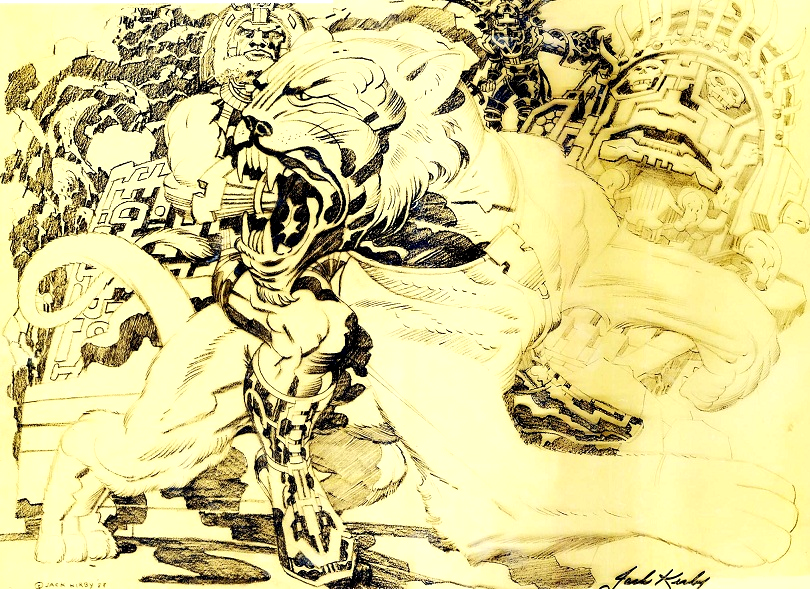
Noted sculptor Randy Bowen produced a large bust of Jack Kirby complete with cigar, in metal and ceramic. It served as a bookmark to a similar job of Stan Lee.


Peter Laird had Jack draw a version of the TMNTs – DC asked for one final Superman
Craig Yoe and his wife Janet love to explore pop culture; their books represent the lunacy, the diversity and the similarities of our artistic tapestry. In 1991 they were assembling a book looking at the various ways Mickey Mouse had and has been represented by artists over the years. They commissioned a diverse group of artists to supply their unique talents to interpret the mouse. One such artist was Jack Kirby. Jack supplied two drawings, inked by Mike Thibodeaux showing Mickey as a super-hero. They were bright, imaginative and energetic showing Mickey with Kirby semi-circular muscles, forced perspective, and a colorful four-color costume. It was just a wonderful homage to Disney and Mickey. The book was called The Art of Mickey Mouse 1991, Hyperion Publications.
Back in 1991, I did a coffee table art book “The Art of Mickey Mouse.” Craig explains his part:
“I got artists from around the world to do their interpretation of “The World’s Favorite Mouse.” One of the first people I called was Jack Kirby. He and his wife Roz were very excited about the idea. He sent me two drawings, as I recall, and I chose this one. I colored it “animation style,” with the black line on an overlay and the background colors underneath.”
Kirby meets the mouse – Mick as the Sorcerer’s super apprentice
There is one area of contention among comic fans. The pose used for the chosen Mickey drawing is a trace of an earlier Kirby drawing with the original costume erased and the new decorative bits such as the costume and colors added later. This process shows up in several Kirby pieces of the time and even ACG, a comic book company used this method on several covers of reprint books featuring characters that Kirby never drew during his career. Some were inked by none other than Joe Sinnott. Some fans screamed at the charade. They were paying for Kirby art, which Kirby might not have ever touched. Did Kirby make the line changes that created the different costumes? This has never really been answered.
Kirby never touched these copped from other characters – original template for Mickey
A local writer by the name of Ray Wyman, Jr. approached Jack about producing a biography. For many hours they met, talked, and shared experiences. The result, called The Art of Jack Kirby (Blue Rose 1992) is an interesting though flawed attempt at a biography. It suffers from a problem that other biographies have—they rely too much on the verbal history from the subject rather than starting from a checked and rechecked timeline. The remembrances are great but accuracy might have been better. Ray did manage to get to the Kirby soul at times and his work is indispensable. The checklists are next to hopeless as the accrued mistakes make it unreadable, but the graphics are first rate and the Kirby anecdotes are priceless. It also suffers from crass interference in that the cover is a piece of junk cobbled together by Turtle creator/ Kirby lover Kevin Eastman. This was his reward for fronting some of the money.
It should also be mentioned that since the late ‘60’s, Kirby had been working on a novel. Tentatively titled The Horde, Kirby worked and reworked the piece until he gave up out of frustration and piled on feelings of fear and apprehension. The book presents a scary premise of a mass uprising from out of the East. Kirby felt the ending was becoming too horrifyingly real and it worried him. He reached a point and couldn’t go further. Sadly, perhaps at the top of the list of never finished Kirby projects. In appreciation, the Kirby’s gave the novel to Ray for the good work he did on the biography. Ray tried to cobble it together. Professional editor Janet Berliner tried to piece the manuscript into a workable whole. She managed to get a few chapters published and Ray and his partner have attempted to finish the work. Time will tell if it ever sees print.

The late Eighties were a renaissance period for comics. Sales had picked up, the new creators made comics cool again and new companies were sprouting up like weeds. Going into the Nineties, everyone wanted part of the new growth. Topps was a card company; most famous for their baseball cards, Topps was the company that Jack had supplied some art for in 1961. They had managed to expand over the years into other genres such as Mars Attacks, Garbage Pail Kids, and even comic related card series. Len Brown was now the head of Topps. Len had a career that had touched on comics when he wrote some books for Tower Comics and Creepy Magazine. He had long thought of getting Topps into comics. Marvel had also gotten into the card business when they bought Fleer Sports Card Company in 1992. Now the shoe was reversed. Topps didn’t have to spend millions to get into the comic business, just hire a guy with connections. Len Brown hired Jim Salicrup to run the comics division. Jim had been an editor at Marvel and had overseen some of the largest selling series in comic history. They were hesitant about jumping into the superhero market, it was very crowded, and the thinking was to try to find a niche all to them. Their first offering was an adaptation of Dracula- a very classy project; then some Ray Bradbury adaptations. Some people approached Topps with some licensed Kirby material, and Jim thought to himself, Kirby was different than what the market was pushing. The heroes had become as dark and vicious as the villains. Heroes were no longer heroic. “Kirby to me was never anything like that–it was all very heroic, very noble with a lot of solid underlying moral values.”

“We all wanted to talk to Jack directly. So the Topps people flew to California and began negotiations with Jack and Roz,” Jim says while working with Jack that he began to understand how Kirby had let himself be screwed so many times in the comic biz. “There’s a part of him that’s just so sweet and trusting that in the back of my mind I was thinking, if we weren’t offering a really great deal, it almost would be too easy to take advantage of this guy- he’s so nice. In terms of the deal we struck, it was a deal he originally tried to get with DC. Go over to a publisher, sell a bunch of ideas, and then get people like Steve Ditko, Don Heck and the old Marvel gang to actually draw the material.” They settled on several series and a group of one-shots to introduce the characters. The series were The Secret City, and Satan’s Six, and the one-shots introduced Bombast, Glida, and Captain Glory – The Triad Cell. The premise is that Mankind as we know it is the latest incarnation of humanity. Mankind reaches a point every 15,000 years where its technology overtakes its reason and it destroys itself. The previous civilization perished with the floods of Noah, but not before several people had been entombed in a form of suspended animation to be reborn to teach the new humans not to continue to make the same mistakes. During an earthquake the three suspended people were awakened and find themselves in modern day Chicago. This stranger in a strange land concept had been done many times, but it offers lots of avenues for mistrust and misunderstanding to cause havoc in their lives.
Jim Salicrup, Roy Thomas and even Steve Ditko helped out
Roy Thomas was brought in to write the series, and Ditko, Heck, and Dick Ayers along with some newer artists did the art. The Secret City Saga was a mess, many too many hands in this pie, plus another new title Victory that was supposed to wrap all of the Kirbyverse together was unfinished. This brought in Captain Victory and Silver Star to join in the fun. It was a nice tribute to Jack, but it was an abortion of a concept.
The other series, Satan’s Six had a more unique premise. It centered on six souls condemned to Hell, but try as they might, they can’t do bad. Every evil concern they try ends up doing well. And the devil won’t accept them until they do something really bad. This is a book that needed someone truly twisted like Steve Gerber to write. The characters are funny and the art was wacky but the plots were so dreary. Tony Isabella didn’t do twisted. The only saving grace was that Jack had drawn eight pages of art that was sandwiched into the initial issue.

In a mixture of sadness and happiness, Jack ran into Dashing Don Heck at a comic convention. The two old pros happily embraced and recounted old times. Don, a much remembered architect of the Marvel legend had been relegated to the trash heap of comic artists a while back, yet Jack loved and admired Don’s work. Don talked about the hard times, yet told Jack that he had received his largest royalty check ever from his work on Jack’s Secret City series. Jack was so happy, and bragged on his old friend the whole day. Jim Salicrup was amazed when Jack exuberantly thanked him for the series and for hiring his old friend. Salicrup could only mutter that it was Jack Kirby that deserved all the thanks. Writer Tony Isabella could only agree with Don, despite past glories at Marvel, his royalty check from Secret City was his largest.
According to Len Brown; “The first batch of Kirby books sold very well. The line started out like a house on fire! We billed over a million dollars, so we said “Hey this is easy stuff!” But these were the boom years with speculators buying number 1’s probably inflating sales. Sales dropped off quickly.” Jim Salicrup bemoans; The writing was on the wall for the series in very short order. The premature cancellation of Silver Star and Victory was something that lead to changes in how I would continue to be involved with the company. I became Associate Publisher and put through a plan that I never again wanted us to publish one issue of something and just cancel it. I would have sooner not have published it at all and wait for a later time.”
Kirby provided some covers and a few pages
Unknown to many, Jack was diagnosed with throat cancer. Kirby responded well to the chemo; Steve Sherman says that Jack was the only person he ever knew who didn’t lose his hair from the chemo. But Jack was weakened.
Jack was not in the best of health, and had seriously considered not attending the 1992 Con. But with some gentle nudging by friends he relented and he and Roz attended. Unknown to Jack, his friends had arranged a big function to honor Jack and Roz’s 50th anniversary. It was the bash of the season with tickets being the most sought after item at the Con. Jack and Roz restated their wedding vows and danced to a big band orchestra. It was a glorious event with both Jack and Roz overwhelmed by the attention.
The Kirbyverse had died, but Jack never let it worry him. He was well paid for the concepts and had no hand in the actual production, so he didn’t blame himself. Just as it ended, a new project arose. Mike Thibodeaux started self-publishing with a company called Genesis West. The first comic published was called Phantom Force – a concept created by Mike and Jack during the Last of the Viking Heroes series. Jack and Mike had been pondering working together, and when they started to flesh out the characters of Phantom Force, Kirby drew some conceptual drawings. Then as Mike says “Jack got carried away drawing the first book. He was only going to do a couple pages, and he ended up drawing the whole book. That’s how he worked.”
Thibodeaux took the pages to the San Diego Comic Con to ink; he was spotted by Rob Liefeld who made a suggestion. “Let me put this through Image, and since you have the pencils….” Image was a brand new publishing company started by a select group of hot young artists who had made their mark at Marvel, mostly working on Spider-Man and X-Men titles. Rebelling against the plantation mentality of the large corporate structure, they decided to band together and start their own company where each creator would be responsible and rewarded for their own creations. It was a set-up that Kirby had championed for years.
Rob wrote;
“I am still absolutely fanatical where Jack Kirby is concerned and when the opportunity to publish Jack’s final unpublished work came about, it was an opportunity I could not pass up.
“The opportunity came about through a meeting with Mike Thibodeaux at the 1992 San Diego convention. Mike approached me about inking a Jack Kirby illustration. I was elated! I asked Mike if he had other Jack pencils and he told me of a project called Phantom Force. He said it was the last story Jack completely penciled and that since he co-owned it with Jack that he was able to shop it around on his behalf. Mike originally intended to publish Phantom Force with his own label… but was excited at any mention of bringing it to Image.”
Image had proposed that they would turn the art over to a multitude of artists for each to provide their own take over Jack’s pencils. Unfortunately, with that many pages spread over this wide country Mike was having trouble keeping it all organized. The first advertized deadline came and passed without any product. Unfortunately, the word of mouth had been fantastic and presold orders were thru the roof. It was canceled and reordered; which is always a killer. The book never saw day until more than a year later with a cover date Dec. 1993.
With the backing of Image, and the subsequent publicity, Phantom Force was a guaranteed smash. The first solicitation reached nearly one million units, but when the project was delayed for 6 months, the resolicitation was nowhere near as good. Though not a million seller, the comic sold very well, and the various pages of Kirby pencils inked by the hottest artists in the business was a nice homage. Mike quickly followed this issue up with one by Genesis West. Jack’s vision of the series was a large series of interlocking stories built around the central characters and a few others that they had planned called Malibu Maniacs. Unfortunately Mike is not as quick an artist as Jack was and his output was inconsistent. There was some discussion about a possible cartoon based on Phantom Force but the owners of the costumed hero the Phantom raised a stink quickly stalling any such project.
Rob Liefeld’s plans were slightly different; he saw this project as a way of paying tribute to Jack’s legacy. Rob wanted to have these pages inked, sequentialed, and printed gratis to Jack. Steve Oliff, and Olyoptics would do the coloring. Just like Destroyer Duck was to help Gerber, Phantom Force #1 was to be a present to help Jack during his retirement. Rob said;
“We do it out of respect for the paths Jack blazed for us, Jack’s involvement with a comic company called Pacific Comics was absolutely integral to the eventual formation of Image comics. Through Jack’s efforts, creators’ rights were brought to the forefront of the industry. As a result, the business of comics would change with artists now receiving royalties as a part of their earnings. We could never thank Jack and the others involved in Pacific Comics enough!”
Jim Valentino another Image founder spoke more from the heart. When asked why he wanted to be a part, he said;
“Jack the man: Jack Kirby is one of the most generous and gracious men I have ever encountered. He always has time for his fans; always willing to answer the same dumb questions without agitation, always quick with an anecdote or a story. His demeanor, as well as his obvious devotion to his beloved Roz, has been as strong an inspiration to me as his artwork. My admiration for this man, both personal and profession cannot be understated. For me he is, was and forevermore shall be, a king among men.”
A little dark for me – Mick Gray inks over Kirby
Jack attended the 1993 San Diego Comic Con and worked the Topps booth selling the Kirbyverse books. Gene Colan, a dear friend and fellow artist stopped by to say hello. Gene recalls that Jack’s usual vigor was gone. He lacked his sense of humor and recall. Jack‘s heart was still giving him fits and he had a series of small strokes, that he seemed to bounce back from easily. But his vitality wasn’t there until… After an awards banquet there was a stir among the crowd and from the center emerged Stan Lee. It had been several years since the Comic Journal interview, but Jack and Stan had not seen each other. The crowd reacted nervously not knowing if fireworks might be going off soon. But Kirby, in his usual manner called Stan over and gave him a big hug and Stan says that Kirby told him something. “He called me over and he said… and again, I felt Jack wasn’t fully with it, you know… he said to me -sternly- “You have nothing to reproach yourself about Stan” And it was such… kind of a strange thing for him to say. I was glad to hear it, but I didn’t expect it.” It seems this was Kirby’s stilted way of saying to let the past go.

Even before he died Jack had one last chance to be recognized for his accomplishments. In late 1993, Jack made a guest appearance on the Bob show; Bob Newhart’s 3rd sitcom. The episode was called “You Can’t Win” and Newhart played a comic book artist who meets up with a plethora of Comic Book greats at a convention. Besides Jack and Roz Kirby there are a dozen other Golden Age greats. Jack had a speaking role. It was a wonderful evening for Jack to catch up with old friends, and some new ones.
In one last gesture, Marvel okayed Jack recreating some of his iconic covers for sale. Jack produced about 15 titles and these were auctioned off by Sotheby’s Auction House. Some were inked by Dick Ayers, and some by Kirby. They averaged about $6,000 dollars at auction. There has been some controversy as it has been said that Jack was incapable of drawing these, so they were ghost drawn by somebody. The only evidence I have seen seems to point to Jack doing these with possibly some help in the shading and technical areas (Comic Code Stamps, Logos, etc.)

Steve Sherman recalls that early in 1994, he stopped by the Kirby house. Jack looked down and lacking in energy. Jack leaned over to Steve and quietly said. “That’s it, I’m done.” When pressed by Steve Jack reiterated, “I’m done.” No fanfare, just a quiet resignation. No one knew Jack like Jack. It was over. Steve explained. “He was 77 years old, so it was about time.” His health was failing, his hair was now snow white—yet thick and full as ever. His new answer to the same old questions was” You can read it. It’s in the books, go read it.” Jack knew his legacy and that it was secure.

The Phantom Force series limped along with the occasional Kirby cover. But Kirby no longer had the will. Mike recalled; “I remember him one time saying he wanted to draw. He wanted to create. I think this was so ingrained in his soul. These are the things I remember him talking about, just wanting to draw again. Those last few months he wasn’t doing anything at all.” Halfway through the series, the heart of the man who always gave everything to others no longer gave to him. Jack died on Sunday Feb. 6, 1994. Roz found him crumpled on the kitchen floor and knew immediately that he was gone. She called 911, and then she called Mike Thibodeaux, and she asked him to make the phone calls. His passing wasn’t dramatic; there was no last great drawing on his board, he didn’t die with his pencil in his hand. He passed quietly and with dignity and fairly painlessly while maintaining his routine.

Stan Lee, after some confusion, attended the funeral, he warmly greeted Roz, he sat in the back and left quietly after the burial. For once there was no fanfare, no screaming fans, and no huckstering, just a sad man saying goodbye to a dear partner. After the maddening rush of well wishers, Stan visited Roz and they spent a pleasant evening talking bygone days. Some tears were shed.
Elliot Maggin, an industry pro had about the best anecdote of Jack’s funeral.
“Virtually all of the villains Jack created were Nazi analogs. He served in World War II and was horrified by the news that came out about the camps in the days following the beginning of the liberation. So the chapel at Jack’s funeral was full of comics pros and fans, and of Jack’s big family. I was one of the pros, I guess. The first speaker at the funeral was a nephew, who loved Jack dearly (it was easy to do) but who clearly was not an initiate. He was much more familiar with his uncle than with his work. This kid opened with an anecdote which he began quite apologetically saying “There’s something you’ve got to understand about Uncle Jack. The thing is he just hated Nazis, in whatever guise they appeared,” and most of the congregation hit the floor laughing. This was not a crowd who needed to be reminded that Jack Kirby hated Nazis”
After Jack died, Greg Theakston proposed a memorial. Greg took the penciled pages of Heroes and Villains, around to a who’s who of inkers and allowed each one to ink a Kirby page to their own style. The result was called The Black Magic Edition of Kirby’s Heroes and Villains. Greg explained; “Heroes and Villains became a memorial project, and I was determined to produce it on schedule. I thought the best way for people to deal with Jack’s passing would be to review his career with the drawings in this volume. Roz wanted it to go ahead, so that cinched it

It is ironic that with Jack’s passing, the industry also went into mourning. The sales surge that crested in the late Eighties-known as the speculators market- imploded and disappeared almost overnight. Marvel had a mass layoff, and dropped from 110 titles to around 50. In Dec. 1994, Marvel fired half its editorial staff, and canceled even more titles. The industry was in dire straits, and more than one editor was heard to say. “What we need now is a Jack Kirby to lift us back up.” Unfortunately there was only one of those Jack Kirby types, and he was gone. In a way though Jack did help Marvel to rebound– Hollywood finally came a calling, and with serious talent and money. A series of big films starring the X-Men, Spider-Man, Fantastic Four and the Hulk exploded on the screens and were huge blockbusters. Kirby’s visions of seeing his creations on the silver screen had come true. And with it Marvel once again prospered. The comic division was a shadow of its old self. Sales were pitiful and it seemed the comics were more important as shills for the movies then as serious entertainment for kids to read. In 2009, Marvel was bought by the Disney Corp. Kirby’s creations were big time, the Estate had to fight for a begrudging credit on the films and, at least some recognition was nice at least not in fame or fortune. It should express to all that he was, indeed, the “King”…. of his small pittance rather than proper royalties. Some things never change.
Jack’s gravestone was unveiled, Mark Evanier looked at is somewhat unconvinced. Mark realized the problem and told his fellow mourners. “Jack’s gravestone ought to be the size of a billboard…in full-color with explosions and rockets and super-heroes all over it.” “The sign that identifies where the remains of Jack are interred should announce to all that the man thereon identified gave us all he had to give for over a half-century, dedicating his life to an industry that did not always return as good as he gave.
For several years after Jack’s death, Roz would still attend the San Diego Comic Con, where she was treated like royalty. She was veritably the King’s queen. In 1997, a huge 75th birthday party was thrown for Roz, and all her friends were there. Lisa said; “she was really shining during that time; she was so appreciative of everybody being there.” Roz never really understood that the love of Jack Kirby also meant the love of Roz Kirby.

Mark Evanier called her one day to tell her that the Fourth World books had been reprinted and published by DC, and that they were selling very well. To which Roz simply replied, “Jack always said they would.”
A few months later she caught a cold that traveled to her chest, lungs ravaged with the effects of a life with asthma. Lungs that had gasped and fought for breath could not take the extra strain. After telling Mike Thibodeaux a warm goodnite at the hospital she passed on Dec. 22, 1997. On Friday, Dec. 26, the service was held, and Roz was eulogized as the equal partner of her husband and a mother and friend without peer. It ended with Mark Evanier saying, “Today we’re all sad to lose her. But we’re glad he’s got her back.”
Two children of the gray New York ghetto, who clawed and fought their way out were buried together on a California mountain basking in the sunshine.
I have trouble when it comes to Jack Kirby’s legacy. On one hand, I look to a comic industry shrinking smaller and smaller with nothing new being generated. Most mainstream comics seem to be advertisements for movies, cartoons or other paraphernalia—endlessly rehashing old characters and plots. No one has come forward and claimed the mantle of creativity that Jack left. I see a hobby with no leader and no hope. Perhaps other technologies have come and claimed the youthful attention once spent on comics. Have comics finally reached their predicted quiet ending? Yet on the other hand I see Kirby’s ideas blossom on a larger more venerated area. Besides the earlier Fantastic Four movies, and X-Men and Hulk, we now have seen excellent Iron Man, and Thor, and Captain America movies put out by major producers, though with little mention of Jack Kirby. Have Kirby’s ideas finally reached their promised proportion?
Reprints abound
I also see old companies filling the shelves with reprints of Kirby’s work with the estate getting a cut.
As to new comics; there might be hope. I also see where some of the great creators are getting together to produce a new Kirbyverse in comicdom. Kurt Busiek and Alex Ross of Marvels fame and others have combined for a fresh look at Kirby’s sole creations. The focus seems rightly to be placed on story over aping Jack’s style. Here’s their press release;
The team that brought you the classic “Marvels” returns with a super salute to Jack Kirby and the Kirbyverse via Dynamite Entertainment: “Kirby: Genesis.” This May, Kurt Busiek and Alex Ross — along with Jack Herbert on finished art over layouts by Ross — introduce Kirby heroes like Silver Star, Captain Victory, and others to a new generation of fans. And to make it easy for new readers to jump on, the 32-page first issue will have a $1.00 introductory price.
They seem to be of a right mind to do it justice, though I wonder if late Kirby is the ideal jumping off point. My own preference might be a new look at Boy’s Ranch. I am fond of the special offering price; best of luck to all of them. My one scary aspect is that Alex Ross seems to be channeling Neal Adams, not Jack Kirby for the artwork. They do have a sense of humor. Look at the inset on the black and white satellite drawing and note the Kirby drawn Jupiter plaque attached. There have been reboots of Captain Victory and others that led to nothing, but it’s hard not to trust the talent involved on this project.
Lisa Kirby’s lamented attempt at a Kirbyverse – Alex Ross’ Marvels
Alex Ross – Jack Herbert

Proposed artwork


Looking further at new comics, I do see that Mike Thibodeaux is still mining old Kirby drawings with this up and comer along with longtime partner Richard Fench.
New Kirby – old Kirby in Phantom Force – Ongoing Kirby fanbook
Of course there’s a story. Michael and David first created the concept of The Potential in 1983. At this time, Michael was inking Jack Kirby’s pencils for the Captain Victory comic book series. While working in Kirby’s studio one day, Michael showed Kirby the cover he had penciled for the first issue of The Potential. With his typical enthusiasm, Jack not only critiqued the pencils, but quickly sketched out his own version of the cover for the first issue!
Strangely enough even Ruby-Spears in conjunction with Sid and Marty Kroft are searching out ways for Kirby’s old presentation pieces be fulfilled and reach the screen. “I love comic books, but this is a treasure,” said Ariel Z. Emanuel, the co-chief executive of the William Morris Endeavor Entertainment agency, who is representing these Kirby works for Ruby-Spears and the Kroffts. “It’s like a boat sunk at the bottom of the ocean, and all of a sudden you’ve uncovered it.” During his time with Ruby-Spears, Mr. Kirby was employed under a work-for-hire agreement, which means that his work is the property of the studio, lawyers for the partnership said. Marc Toberoff, a copyright lawyer representing the Kirbys in their suit against Marvel and Disney, said that he reviewed Mr. Kirby’s agreement with Ruby-Spears and that he believed any art produced under it was work for hire. This affords Ruby-Spears and the Kroffts a wide berth to turn their Kirby properties into movies, television shows, comics, videos games and more — all of which they intend to pursue.
I would be remiss not to mention that Kirby, and only Kirby has a fannish magazine that has been published non-stop for over 15 years. The Jack Kirby Collector, with over 50 issues, may be the only type of its kind focused only on one artist exclusively. There are also several e-site letter blogs built around Jack Kirby, so though we may be a small community—we are noisy!
Several of Twomorrows’ Kirby books
Though I am pessimistic about Kirby’s comic legacy, I do see where other aspects of Kirby have taken root and entered our psyche, or at least a segment of pop psychology.
Percussionist Gregg Bendian was so moved by Jack Kirby that he produced a tribute to Jack Kirby.
JazzTimes: How did you translate Kirby’s sis-boom-bah images into notation/notes?
There was some literal translation into sound. The album starts with the sonic equivalent of a Kirby energy blast, replete with the vibes and guitar issuing forth crackling sparks, flying off in every direction. The drama, the very large dramatic scope of events, the violent confrontations, the otherworldly-ness, all inspired my writing of this music. The idea of having each piece cover a different approach to jazz composition was inspired by Jack’s incredibly varied output as an artist. Ultimately, I tried to capture that exciting feeling from childhood where I’d pick up a comic book and become completely ensconced in another world of the imagination.
JazzTimes: Your compositions seem to focus on the spacier aspects of Kirby’s work, the psychedelic sci-fi he was so renown for.
I don’t think we focused on the spacey in particular. [Our song] “New Gods” gets very violent during the battle section. So does “The Mother Box.” Then there’s the rattling metal of the prepared vibes and the steel guitar on ”Air Above Zenn-La.” I went for a large scale of emotions and textures ranging from the small to the gigantic. That’s another nod to the breadth of Kirby’s creative power.
I’ve always felt that Interzone [guitarist Nels Cline, drummer Alex Cline, bassist Joel Hamilton] was a bit like my own little Fantastic Four, each contributing a distinct musical identity and using our powers for the benefit of all creative music listeners!
JazzTimes: Was Kirby a jazz fan? He was certainly as prolific as some jazz artists!
I was unable to find out about his musical tastes apart from knowing that he and his wife went to hear Sinatra on one of their first dates. [Comic artist Jim] Steranko tells me that Jack often worked with the TV on in the background and not music.
Like jazz, comics are a uniquely American art form. And I do think of Kirby as a “jazz artist.” He was an energetic, passionate man—certainly no cold, calculating draftsman. As Mark Evanier, his assistant, tells in his liner notes, Jack would sit down at the page with a theme in mind and a pencil in hand, and allow his imagination to run wild. Often the results would surprise even him. Kind of reminds me of Coltrane saying he couldn’t play a transcription of his solos after the fact, because “they’re too hard.”
JazzTimes: Is Kirby the Charlie Parker of comics? His co-creation/refinement of sequential art seems on par with Parker’s co-creation/refinement of bebop.
I think of Kirby as a Coltrane figure. Like Trane, he was a virtuoso and so prolific. Like Trane, his early work defined the parameters of what that form would become for all that followed. Sadly, also like Trane, his later, most personal and abstract work—Jack’s Mister Miracle or Trane’s Interstellar Space—is considered by many to be self- indulgent and lacking coherence. But I don’t think the artist/visionary can help but move into more and more challenging areas, and so I say wrong in both cases.
He invented the graphic novel. Check out the films of Spielberg, Lucas, Ridley Scott and you’ll see Kirbyesque cities, spacecraft, aliens and villains. He was a wellspring of creative ideas, a visionary of sci-fi concepts. He is famous for being able to draw an intricately detailed page as fast as Bird could play an equally detailed solo.
JazzTimes: Do you see parallels between jazz fans and comic book fans—the zealotry, the passion, however misplaced it may be at times?
Yes, and a wonderful result of doing this record is hearing from Interzone fans that say, “I’m a huge comic fan and a jazz fan, and thanks for combining the two worlds!” That’s very gratifying, since I had this feeling I wasn’t alone in sensing the connection between the two. I recently received a note from Sonny Rollins, who heard the Requiem and said he’s pleasantly surprised by all the jazz people who are also Kirby fans!
Hey, with the Michael Chabon book winning the Pulitzer, this stuff is becoming damned near respectable!

There is a small sub-culture of UFOologist who seek to make Jack Kirby an almost god by cherry-picking his stories and granting him prescience.
By Christopher Knowles;
“As uncomfortable as it is for some of his fans and friends to admit, Jack Kirby was a true believer in AAT (Ancient Astronaut Theory) and intervention theory. The scope of his comics work from the early 70s to his retirement is in this regard – the man was obsessed with gods from space.
So why is this important? Why do the beliefs of some old cartoonist who’s been dead for 15 years matter now? Well, Kirby is one of the primary architects of popular culture today. Kirby’s influence on comics is inarguable- as it is on superhero culture in general.
But so is his influence on Hollywood. James Cameron, Steven Spielberg, George Lucas (particularly), Frank Miller, Quentin Tarantino and any other sci-fi mogul you can name today fed at Kirby’s rich trough as kids. In fact, the quick cut/high intensity of action movies today comes directly from Kirby’s Marvel work like The Fantastic Four. I see Kirby’s influence all over video game design as well. You simply have to go back and look at pop culture before the Marvel Age and after, and the centrality of Kirby’s imagination in the recreation of visual storytelling becomes clear as crystal.
And if Kirby is part of the essential DNA of pop culture, so then are his beliefs. You need look no further than Indiana Jones and the Kingdom of the Crystal Skull to see it- the entire tableau was simply a big budget replay of the first issue of The Eternals.
Remember- Spielberg and Lucas are the two of the most powerful men in Hollywood today, certainly from a creative standpoint. Even beyond the films they make themselves they have their fingers in countless pies through their production and technical interests.More importantly, we have very strange indications of Jack Kirby’s precognitive/psychic abilities, specifically in regards to events central to the Synchromystic worldview.
For instance:
• Depicting a Face on Mars 17 years before the Viking photos.
• Depicting a 2001 “Stargate” scenario 10 years before the film.
• Depicting a Saddam Hussein/Gulf Wars scenario in 1975
• Depicting 9/11 scenarios 17 years before the fact.
• Depicting SETI and proffering a man/alien union years before Carl Sagan.
• Kirby’s part in the CIA rescue of the American hostages.Given these synchronicities, I believe it’s important to take his AAT obsession in so far as explicit depictions of AAT, but nearly all of Kirby’s work from 1975 on dealt with aliens, UFOs, interdimensional travel, time travel, genetic engineering and space colonization and on and on. But it’s very seriously. We’ve looked at The Eternals, Devil Dinosaur, and 2001: A Space Odyssey
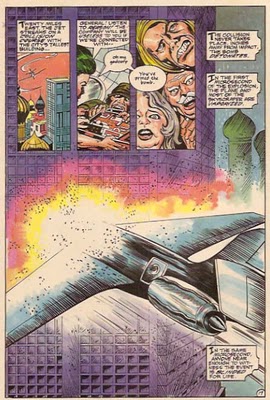
Kirby’s 1980 Bible portfolio that we’ll be looking at today, which is 1000% Astro-Gnostic at its core.
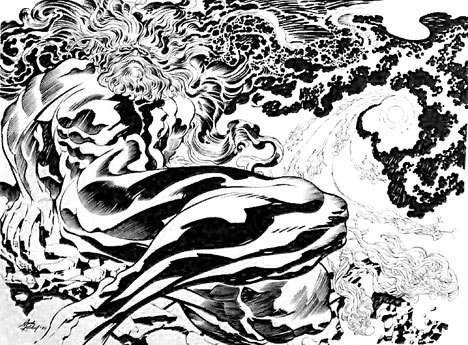
The first plate depicts God in the standard Sistine Chapel mode, an old, bearded white guy emerging from primordial chaos, accompanied by a heavenly host. So far, so good right? But this celestial being is remote, celestial- more like the Monad of Gnostic mythology than the engaged creator of Judeo-Christian dogma.
What we see emanating from the chaos with him resemble the Aeons. They come from the same source, but are in fact on their own trajectory, away from the Monad

Here the Monad sees Earth and humanity as a ball of sin; lust, greed, hate and other expressions of the Ego, which are separate from Monad. It is a fallen state, the cosmic abortion…

Which the Monad then turns his back on humanity to contemplate non-Euclidean geometry- the other-dimensional interests of cosmic divinity. Mankind then begs of the Monad. But who takes his place in the stewardship of our tiny, insignificant planet?

Well, that’s a no-brainer. Here Kirby reimagines Joshua’s genocidal attack on Jericho as the vanguard of an alien assault employing sonic weaponry.
Are these Biblical androids the result of Kirby’s vast and fertile imagination, or is there some basis for these concepts in the ancient literature?

AAT scholar Jason Martell notes that the Anunaki of Sumerian lore had a servant class called the Igigi, whom he believes could actually be the Greys of UFO lore. These creatures have been described as a kind of wetware, biologically-engineered androids: Some have also called the Agigi the Watchers, much like Kirby’s Watchers.
Martell: “Today’s modern UFO’s and Alien Contacts being reported have a strong similarity to the Ancient descriptions of the “anunnaki” Android Beings. When we look at the descriptions of our modern “grey alien”, we can clearly see that they do not look like us, or the anunnaki. Rather, they look like the ancient humanoid depictions of Figurines. The majority of Abduction cases usually have a similar story to them in that the Aliens abducting them will perform medical examination and sometimes experiments having to do with human reproduction.
Is it possible that the Greys were created by the anunnaki as “Watchers” to oversee their experiments here on earth. Jewish religion also had a class of Watchers.”
This makes a lot of sense. Maybe the Greys are not from somewhere else- they were left here to keep an eye on the Project when the Anunaki were called back home. This would explain why these types of beings are in the world’s folklore and mythology.
Maybe we’re not projecting a technological viewpoint on elves and fairies and leprechauns after all. Maybe the folklore is the filter on a reality we had no framework for before we had technology (or maybe the Greys like to play dress-up and mess with people’s heads)
Again, I realize that’s not a very fashionable notion these days, but it’s one that makes sense to me. And of course, all of this remains in the realm of speculation, but what a boring world this would be without that.
It’s impossible with the last paragraph to be sure if Mr. Knowles was actually pulling our leg or not, but Kenn Thomas, a publisher and essayist on all paranormal things, talks about Kirby’s prescience quite often in his speeches.
Christopher Knowles expounds on Kirby and many more topics – he also expounds on music

From Neatorama:
From a Harvey anthology title in 1957 – My pal Kenn who assisted me
“The above is a great example of collision between pop culture and conspiracy theories. An upcoming talk by Kenn Thomas, one of the more level-headed conspiracy theorists, looks at the links between a story written by comic book legend Jack Kirby, for the comic Race for the Moon, (above) and The Face on Mars – the story coming decades before the feature was discovered.(LOL—Kenn being called level-headed- sorry editor)
“When Steamshovel Press editor Kenn Thomas speaks on “JFK to UFO” at RetroCon, his prefatory remarks will concern “Jack Kirby, Conspiracy Theorist”. Thomas looks at the famous comic book artist’s interest in parapolitics as well as the possibilities that Kirby had back channel sources within the world of covert intelligence. Richard Hoagland speculated that the secret space program gave Kirby information leading to the artist’s 1958 comic book story, “The Face On Mars”–an anomaly that did not become part of the conspiracy lexicon until the Viking probe’s Cydonia photographs of 1976.

Thomas examines the history of this as well as Kirby’s prescient forecasts of American involvement in World War II and Vietnam; the use of conspiracy themes in his 1970s comics; and his documented involvement with a CIA rescue operation during the 1980 Iranian crisis.
How does central intelligence shape our view of conspiracies in the popular culture? “
Does this mean the CIA knows we are about to be visited by 2,000 feet tall alien Gods? Or Devil Dinosaurs?
Kirby’s Face on Mars story seems to have been the basis for the movie Mission to Mars with Gary Sinise and Don Cheadle et al in 2000. Movies like The Matrix, and He-Man also seem to be searching for that Kirby panache.

You know you have reached a level of celebrity when there have been tabloid stories of children channeling the life-force and artistic talent of the dead artist. The Weekly World News dated Apr. 16, 1996 reported “Ghost of Dead Comic Book Artist Teaching Me How to Draw” He has reached legend. Could saint-hood or canonization be far removed?
Perhaps a sure sign of continuing legacy is when one of your creation, characters or concepts is applied to a new project to give it a sense of magnitude and gravitas. Joshua Glenn is a writer, philosopher, and conceptualist who calls himself a “semiotician”. He writes an ongoing column for the Boston Globe newspaper in their Ideas section. One of his fascinations has been an attempt to reperiodize the 20th Century into a cohesive set of generations to show the changes of thought and passions. His most recent suggestions as published and distributed throughout the internet:
1884-93: The New Kids
1894-1903: Hardboiled Generation
1904-13: Partisans
1914-23: The New Gods
1924-33: Postmodernist Generation
1934-43: Anti-Anti-Utopian Generation
1944-53: Baby Boomers
1954-63: OGX (Original Generation X)
1964-73: PC Generation
1974-83: Net Generation
1984-93: Millennials
1994-2003: TBA
Note number 4, (1914-23) It is no coincidence that Glenn named it after Jack’s greatest creation. Many have adopted Tom Brokaw’s title “The Greatest Generation” when talking about this group, but Glenn thinks they deserve better.
“Throughout their lives, they have been America’s confident and rational problem-solvers: victorious soldiers and Rosie the Riveters; Nobel laureates; makers of Minuteman missiles, interstate highways, Apollo rockets, battleships and miracle vaccines; the creator’s of Disney’s Tommorowland; “men’s men” who have known how to get things done…World War II provided them with a coming-of-age slingshot, a catharsis more heroic and empowering than any since the American Revolution…No other generation this century has felt (or been) so Promethean, so godlike in its collective, world-bending power.”
It is no coincidence that the atomic bomb, and the polio vaccine came from the same generation. As did Ted Williams and William Burroughs.
Glenn explains;
“Is it any wonder that I find “Greatest” an insufficient superlative for this generation of Americans? By all accounts, they’re not mere mortals; they’re homo superior. That is to say — they’re superheroes! On the surface they may have looked square, in their gray flannel suits, fedoras, and horn-rimmed glasses. But really they were heroic, empowered, godlike. They seem to have operated in two registers — the everyday and the mythical — simultaneously.”
“This generation produced only one president, but it was John F. Kennedy, who brought the “best and the brightest” into the White House, faced down the Soviet Union, and put a man on the moon. Astronauts Alan Shepard and John Glenn are members of this generation; so is faster-than-sound test pilot Chuck Yeager.”
“The 1914-23 generation came of age during the Depression, during which time they were kept busy by the Civilian Conservation Corps “getting things done, building things that worked, things that have lasted to this day,” as it’s been admiringly put. (Members of the older Partisan cohort, meanwhile, engaged in sit-down strikes in assembly-line industries, and questioned the inevitability of capitalism.) As adults, the 1914-23 generation fought World War II; note that a handful of Americans born in 1924, like George H.W. Bush, saw action in the war, and are honorary members of this generation. After the war, they saved American industry, tamed the business cycle, built the suburbs and moved into them. “
It was also this generation that brought forth the super-hero comic—which offered up a new vision of man, one which offered justice, truth and a vision of mankind never imagined before. It’s contribution to the arts was uplifting and grand in its vision.
“Beginning in 1938 with the debut of Jerry Siegel and Joe Shuster’s Superman in DC’s “Action Comics” no. 1, and continuing through the Forties, superheroes as we know them today were invented and refined, and the comic book made its debut as a mainstream art form. Americans born between 1914 and 1923 — including comics editors, writers, and artists like Joe Simon, Bob Kane and Bill Finger, Will Eisner, Bill Everett, Carl Burgos, and Sheldon Mayer and Jack Kirby — gave us the original incarnations of Superman and Batman, Captain America, Plastic Man, The Spirit, etc.” Stan Lee and Jack “King” Kirby would later give us the Fantastic Four, the X-Men, Thor, the Incredible Hulk, Iron Man, the Silver Surfer, Doctor Doom, Galactus, The Watcher, Magneto, the Inhumans, and many more iconic characters. “
“In Kirby’s honor, I’ve named his entire generation after “The New Gods,” a short-lived comic book series that he created for DC in 1971. Kirby’s New Gods are a race who lives outside of normal time and space in a dimension called the Fourth World. Although they resemble homo sapiens, they are stronger, faster, and smarter. They possess superior technology; they are immortal. They are, in short, the greatest.
For good, or bad it was this generation that pushed the envelope in philosophy, politics, music, the arts, and sports that define the 20th Century and Glenn concludes that it was a Kirby creation that best spotlights it.
I find the designation comforting, but when I peruse Glenn’s long list of New Goder’s, another pattern emerges. It is one I had noted before, rather than New Gods, I think it might be more accurate to call it the Second Gens in recognition of just how many of the great people were second generation of the immigrants and slaves that arrived at the turn of the century; a second wave of yearning and wandering outcasts. Jews, Poles, Italians, Irish, blacks and others suddenly became the backbone of this generation, and their love of country became a personal love affair. Using the drive instilled by their hard-working immigrant parents, and the constant demand to better oneself they broke free of the ghetto tyranny and expanded outward touching all sectors of the country. Using the memory of their own persecution due to race, and creed, they pushed this country to do the right thing and brought the irrevocable demand of justice and history in securing civil rights for all. The arts and humanities are dominated by this new generation fired by the hard times of their childhood, yet comfortable as Americans first. Jack recognized how much he owed to the struggles in the Lower East Side, and just how much his parents wanted him to do better. He used that traumatic childhood to feed his desire to get out, yet never forgot the steel it melded to his backbone; the same for Joe Simon, and Siegel and Schuster, and Will Eisner, and a whole crop of writers, and actors and athletes using their chosen professions as stepping stones out of the morass. This pattern has a ying to its yang, as others failed to make the leap such as Julius Rosenberg, and Richard Nixon – men who just couldn’t let their childhood turmoil behind and build a better land.
Whenever I get down on this subject and struggle to find its core, I am reminded, and drawn full circle back to Sholom Aleichem. Though he died in 1916, his memory and legacy would see full exposure 48 years after his death when Fiddler On The Roof exploded on Broadway introducing Sholom’s soulful tales to a new audience, and making his heirs proud and rich. For Kirby’s heirs, when in their darkest hours they stumble and fail, I hope they keep the words of Sholom Alichem’s granddaughter close to them.
“I am the only living person who remembers him. I remember his laugh, the warmth of his hand, a few scenes from my childhood. He taught me to speak in rhymes, he invented funny stories and silly games, and I adored him. Above all, he taught me to laugh instead of crying.”
Of Jack Kirby, I can say I saw this man and remember his warmth, and his laugh and his elegance and spirit. And he left me feeling better about life than before I met him.
So I think Kirby’s legacy is secure….. as long as people like Mark Evanier, Greg Theakston, Kurt Busiek, or myself and others continue to tell his story, and a new generation thrills to Silver Star, The FF, Captain America, and the Fourth World, his stories live, and breathe, and the flame is passed. In time, a new media will adopt his words and entertain once again.
So hope is not lost. Jack may yet be transformed into a larger consciousness, one that teaches us Kirby’s lasting message.
“Create your own story, that’s the Kirby way.”


Previous – 25. Animated | Top





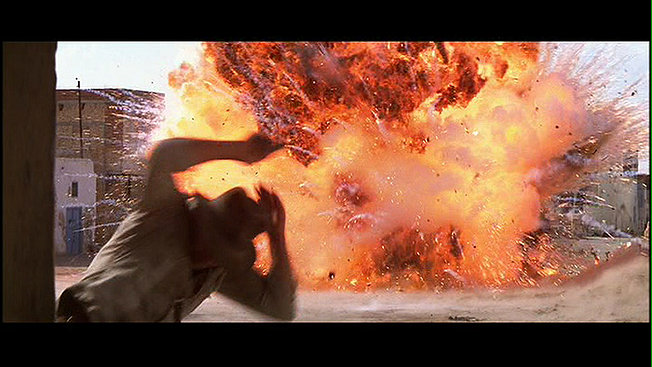














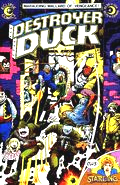


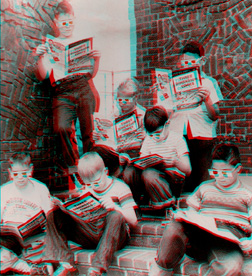




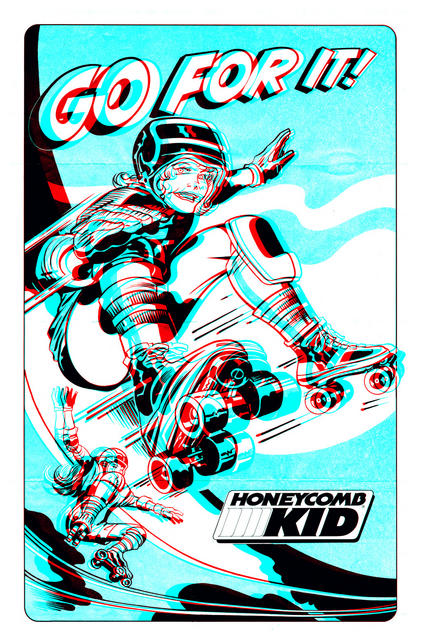








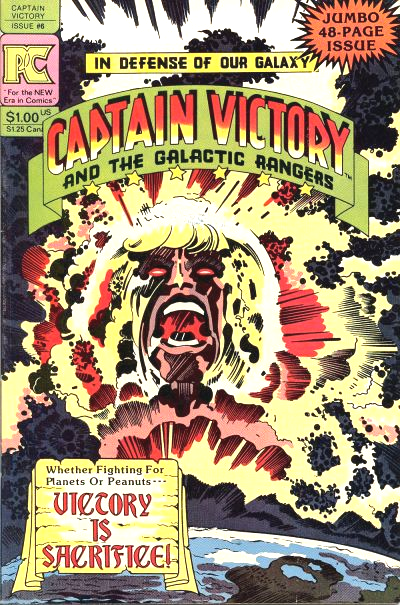














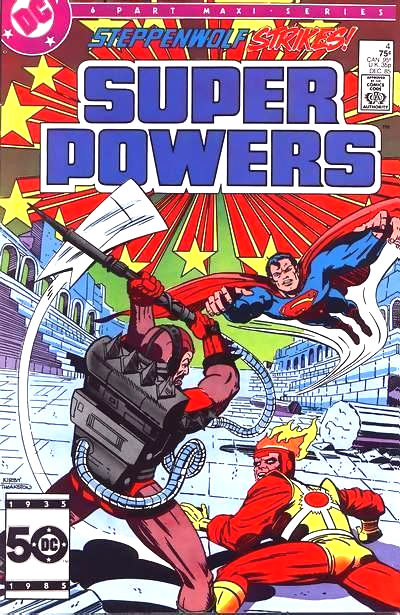



































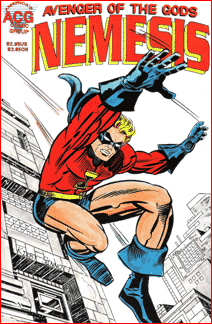
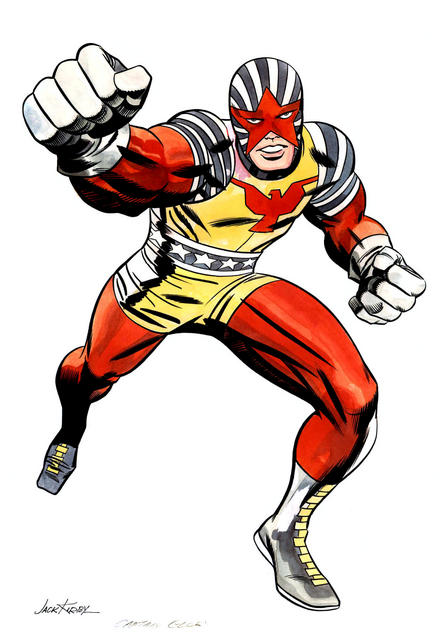




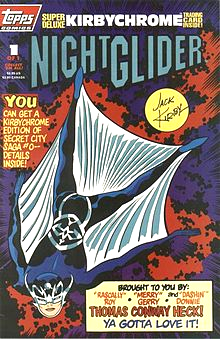












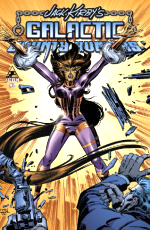













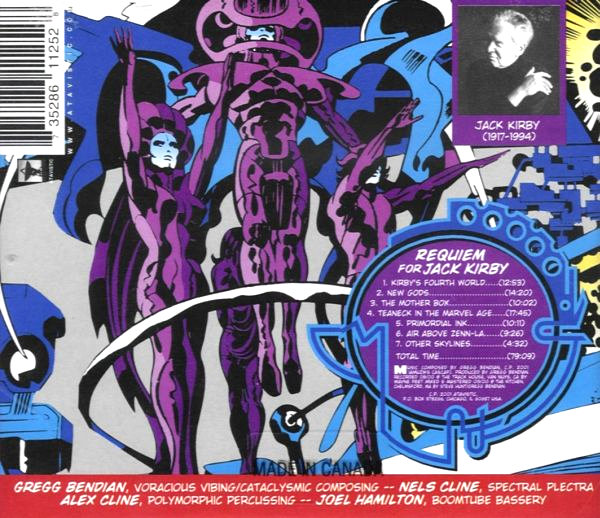




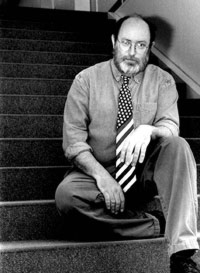














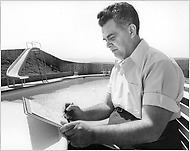







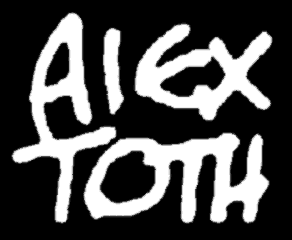





























































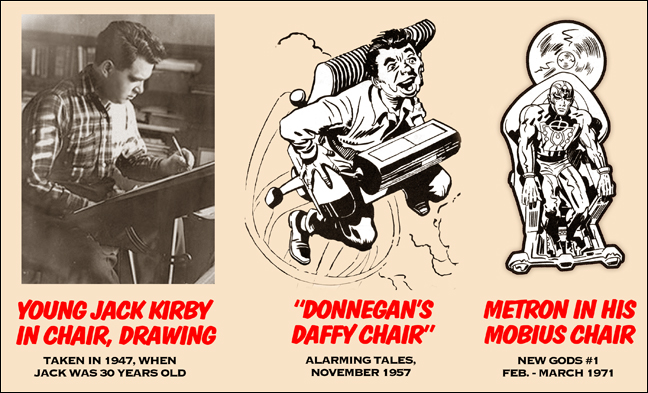
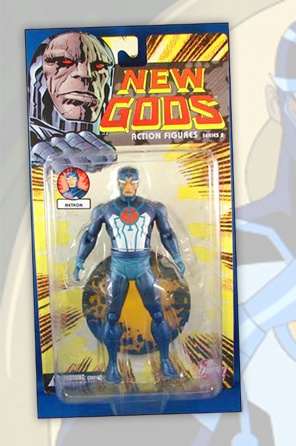




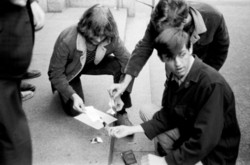






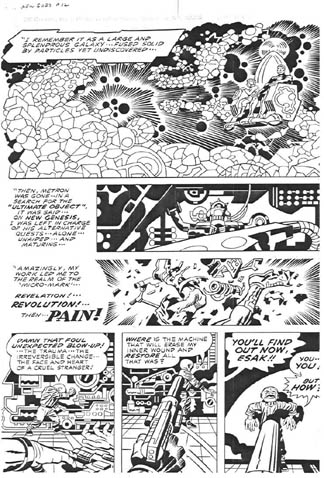
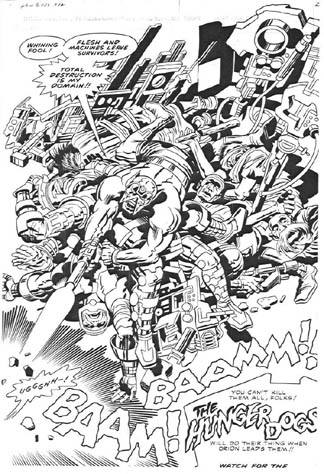



















 Oh relevancy!!! Has ever a good word been so abused in mainstream media? Whenever journalists, or reporters try to explain the evolution of comics they always spout that the newer comics have become relevant—a reflection of the more complicated ways of real life, and acknowledging the dirty underbelly. It’s not that they are wrong, but they always back up their assumptions by pointing out mega-steroidal hulks or hyper-pneumatic women that fly and are invulnerable, while wearing underwear and cut-out tops. As if that’s reality. On May 2, 1971 an article appeared in the prestigious New Yorker magazine dealing with the new depth and relevancy of comic books, written by Saul Braun. While spotlighting a harrowing Joe Kubert-drawn Sgt. Rock story and Stan Lee’s battle with the censor board for a Spider-Man arc, and O’Neill’s and Adams’ Green Lantern/Green Arrow tales, it also interviews Jack and talks about the New Gods. The article was poorly titled “Shazam! Here Comes Captain Relevant.” I think Jack liked the spotlight, but Jack wasn’t overwhelmed with comics taking on deep problems. He thought they lacked the space and timing to do it right. Graphic Novels were not around yet.
Oh relevancy!!! Has ever a good word been so abused in mainstream media? Whenever journalists, or reporters try to explain the evolution of comics they always spout that the newer comics have become relevant—a reflection of the more complicated ways of real life, and acknowledging the dirty underbelly. It’s not that they are wrong, but they always back up their assumptions by pointing out mega-steroidal hulks or hyper-pneumatic women that fly and are invulnerable, while wearing underwear and cut-out tops. As if that’s reality. On May 2, 1971 an article appeared in the prestigious New Yorker magazine dealing with the new depth and relevancy of comic books, written by Saul Braun. While spotlighting a harrowing Joe Kubert-drawn Sgt. Rock story and Stan Lee’s battle with the censor board for a Spider-Man arc, and O’Neill’s and Adams’ Green Lantern/Green Arrow tales, it also interviews Jack and talks about the New Gods. The article was poorly titled “Shazam! Here Comes Captain Relevant.” I think Jack liked the spotlight, but Jack wasn’t overwhelmed with comics taking on deep problems. He thought they lacked the space and timing to do it right. Graphic Novels were not around yet.


















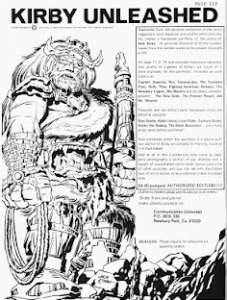 Just after Kirby started the Fourth World series, his son Neal graduated from Syracuse with a Business Degree. He moved back to California and brought with him his young wife. Neal and Steve and Mark hit it off immediately. After the debacle at Marvelmania had ended, they were still excited about the possibility of marketing items relating to Jack’s art. Over the dinner table they decided on putting together a portfolio of Jack’s art through the years, plus add in a simple biography. The result was Kirby Unleashed. It featured many examples of Jack’s early art, most of which had never been seen by the public before. Plus it had rejected pages, and production pages from recent series, and a preview of Jack’s new New Gods books. With a biography by Mark Evanier, and the graphic work by Steve Sherman.
Just after Kirby started the Fourth World series, his son Neal graduated from Syracuse with a Business Degree. He moved back to California and brought with him his young wife. Neal and Steve and Mark hit it off immediately. After the debacle at Marvelmania had ended, they were still excited about the possibility of marketing items relating to Jack’s art. Over the dinner table they decided on putting together a portfolio of Jack’s art through the years, plus add in a simple biography. The result was Kirby Unleashed. It featured many examples of Jack’s early art, most of which had never been seen by the public before. Plus it had rejected pages, and production pages from recent series, and a preview of Jack’s new New Gods books. With a biography by Mark Evanier, and the graphic work by Steve Sherman.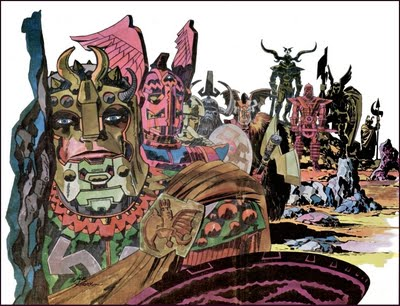
































































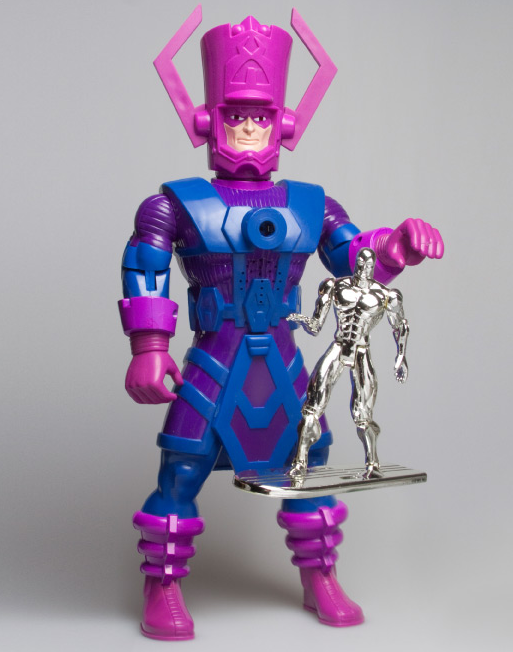










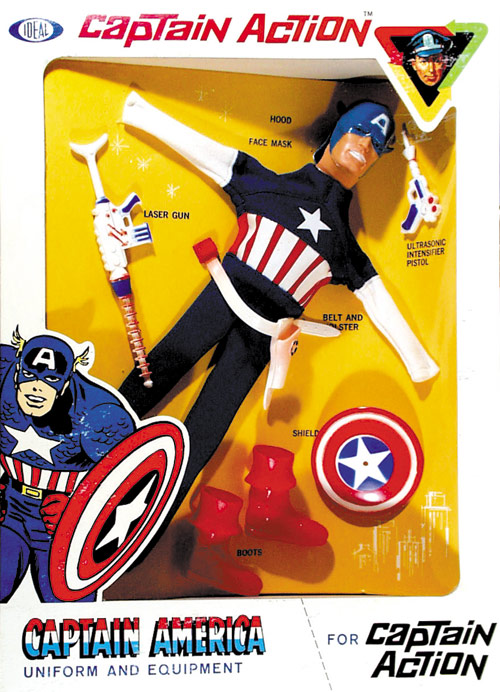

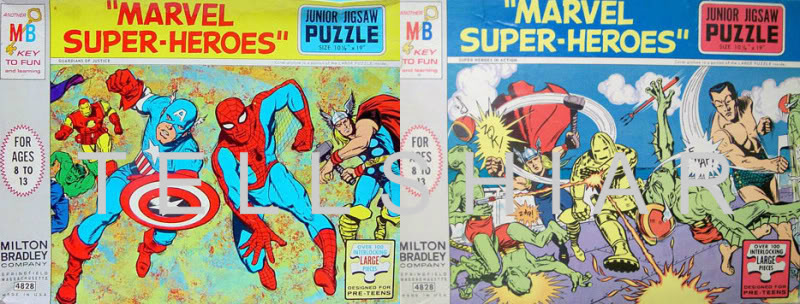

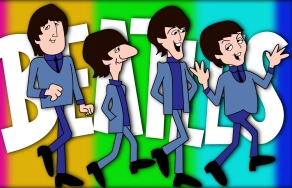
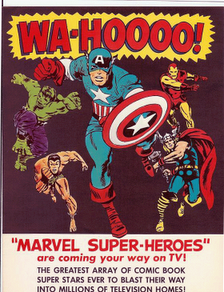


















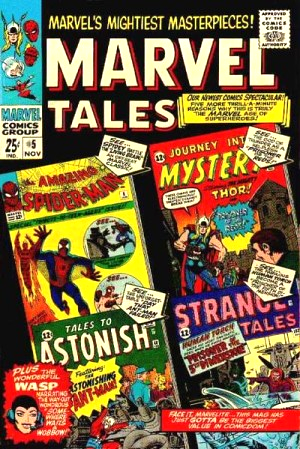
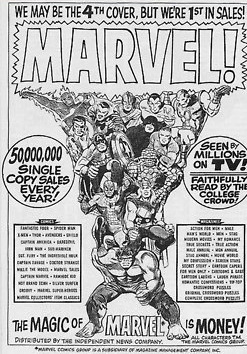



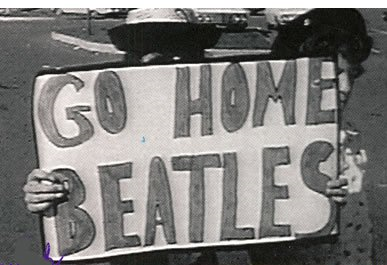





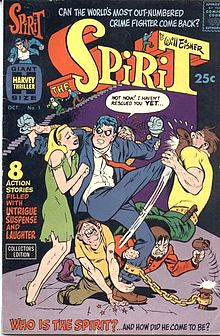











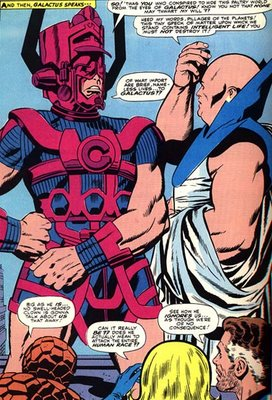
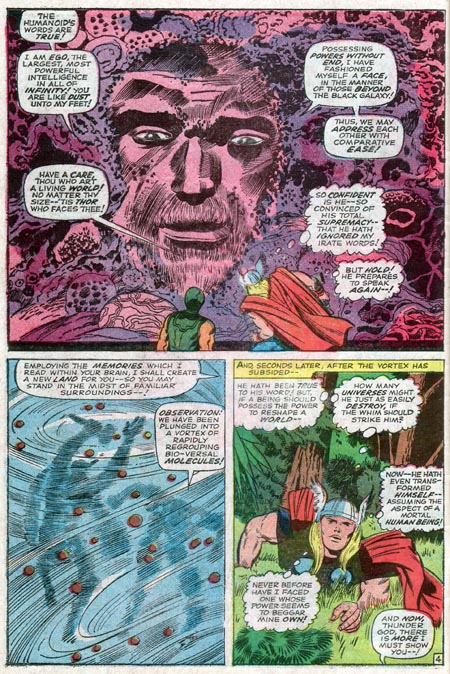




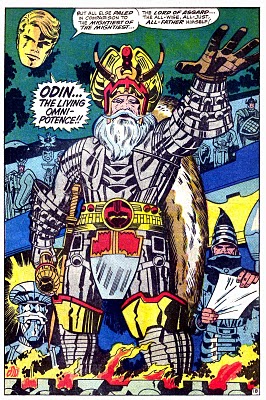







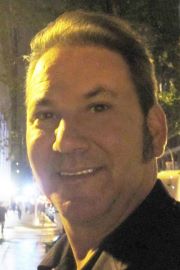





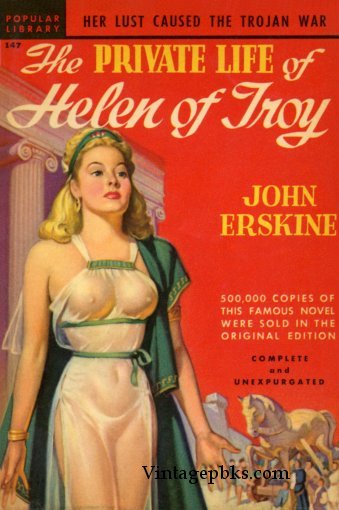




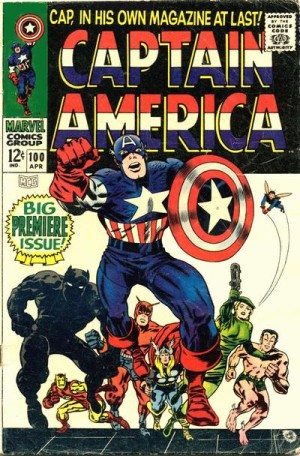

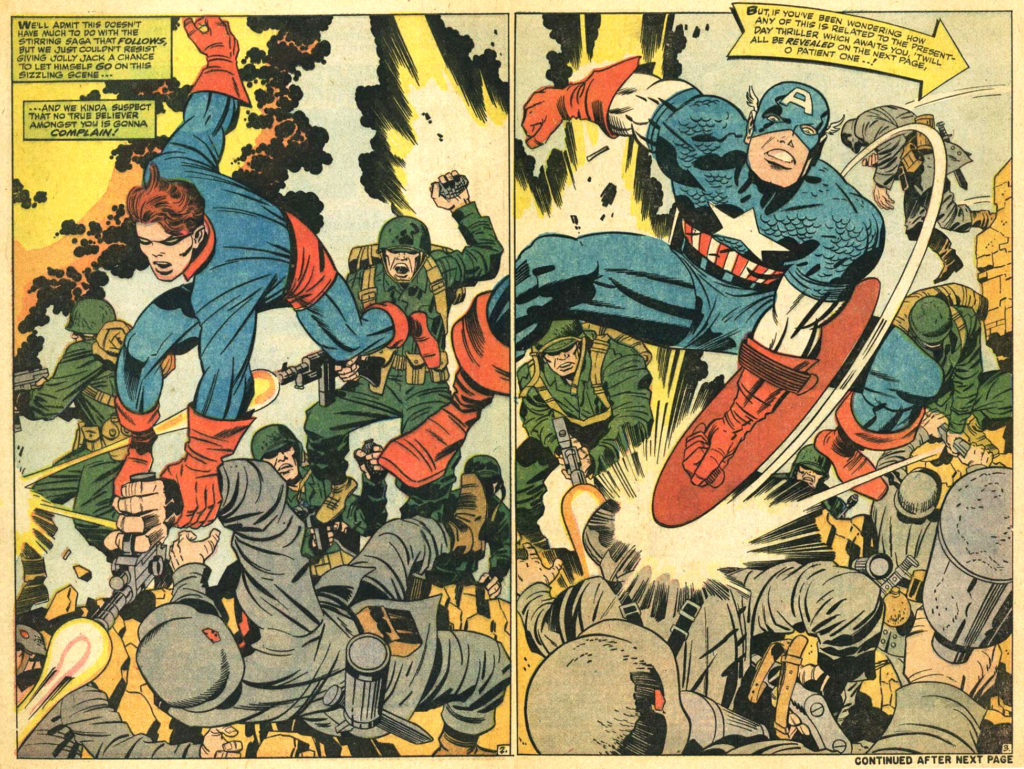
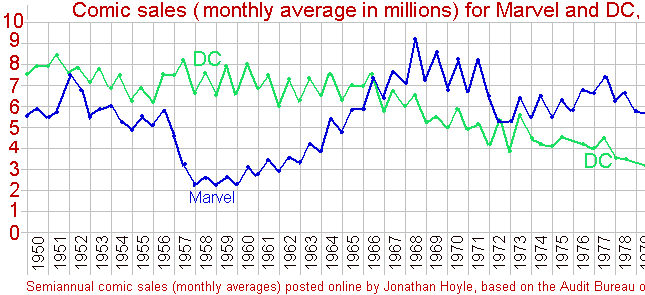

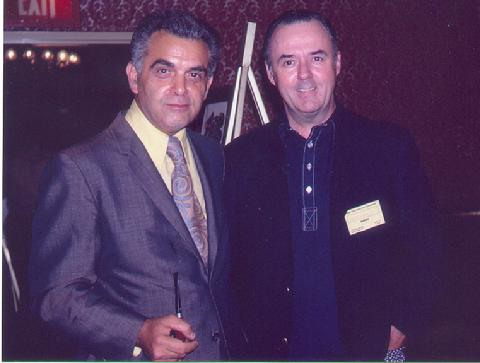







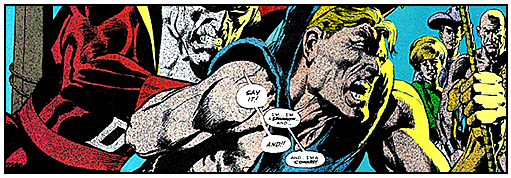
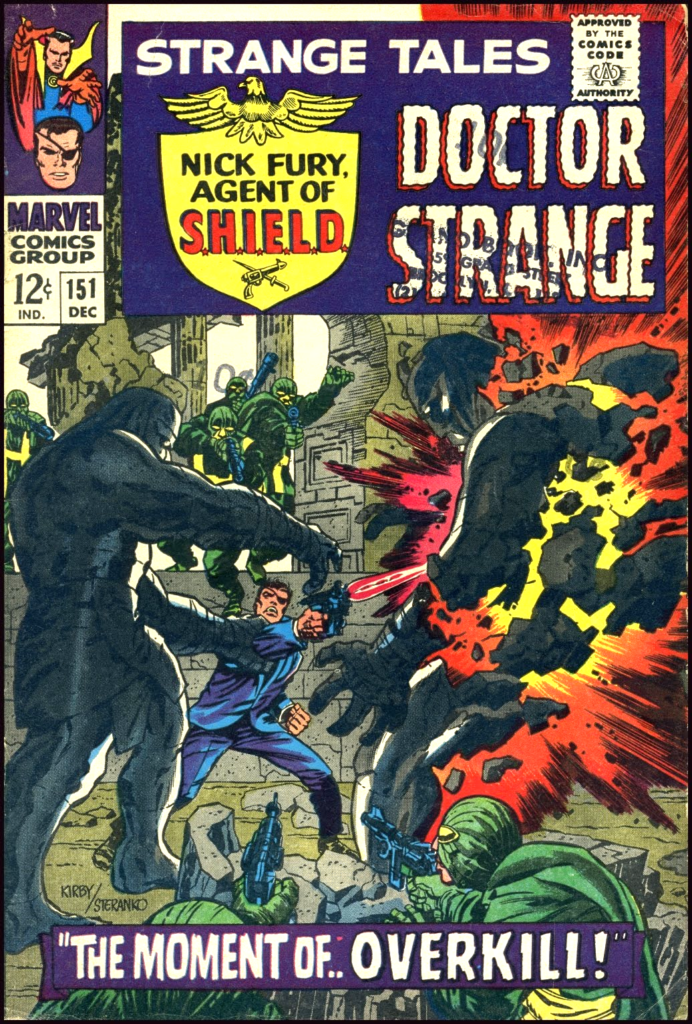

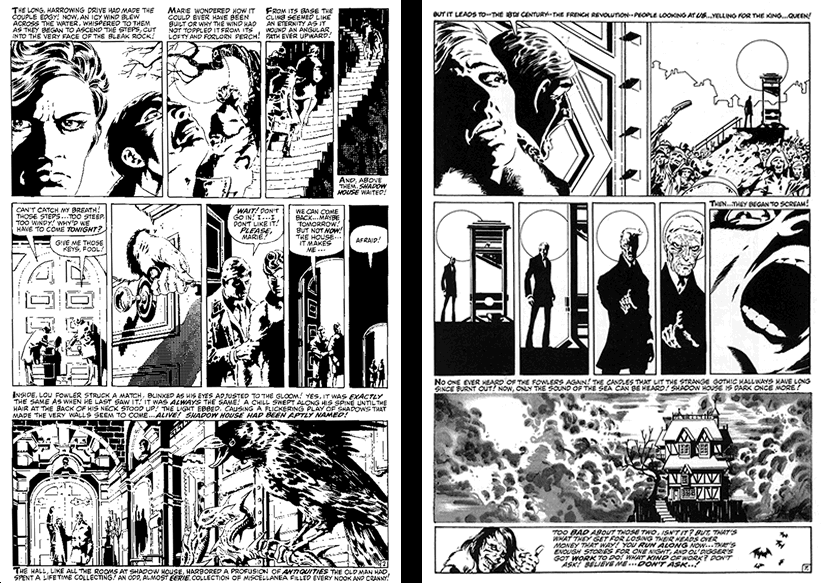


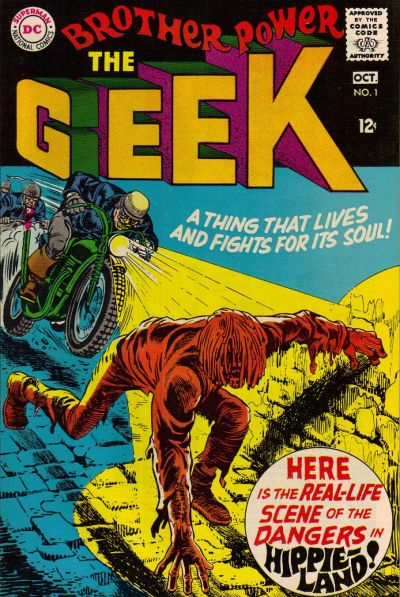










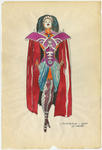









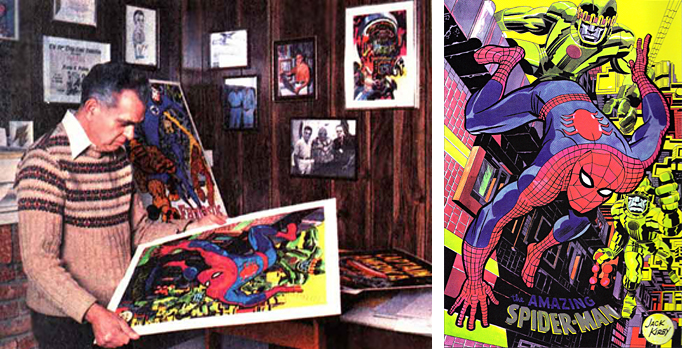

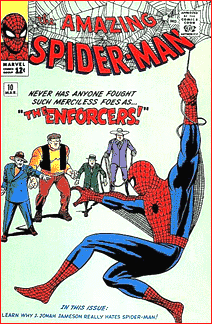
























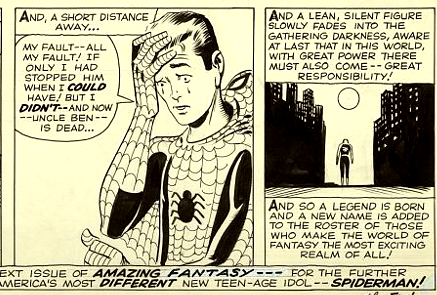






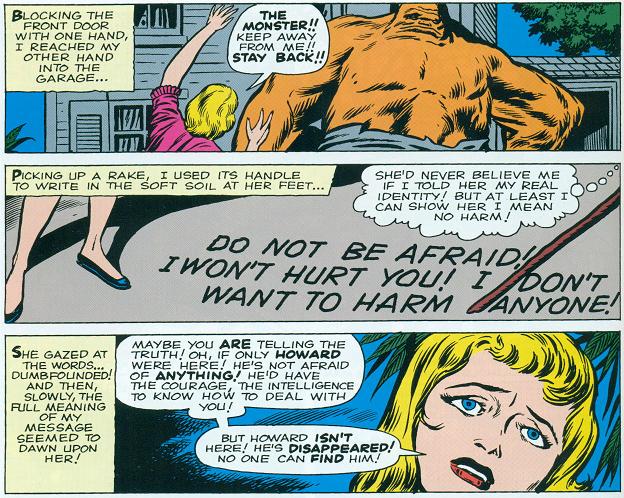




























































 Jack was still pushing ideas for newspaper strips and he asked John if he wanted to collaborate on a war based newspaper strip. Severin explained; “The story would be set in Europe during World War 2; the hero would be a tough, cigar smoking Sergeant with a squad of oddball G.I.s-sort of an adult Boy Commandos.” Now Jack, never one to forget a project told Stan about the premise, and sure enough Sgt. Fury and his Howling Commandos became the new series. The formula continued; Kirby supplied the premise, and Lee added in characterization. Sgt. Fury expanded upon Jack’s group template, yes it had the stoic hero, the brawny Irish second in command, a hot head, and a Jewish mechanical wizard, but it also had a black bugle player, an Italian lothario, a Southern good ole boy, and a stiff upper lipped officious Brit. Black characters were so rare that the colorist mis-understood on the first issue and made Gabe Jones pink! Perhaps he knew there were no integrated units in WW2. Though their tales were as outlandish as the Boy Commandos, they also had a serious side where reality could intrude by way of occasional death in the field of battle. Kirby’s battle scenes were as electric as the ones he drew for Foxhole. The stories had a breadth not seen in the other Marvel series. They dealt with serious topics like racism, and cowardice, and camaraderie in the face of death. The Nazis were as mean in Sgt. Fury as they had been in the wartime books, and took their job seriously. These were no buffoon Nazis-no Colonel Klink and Sgt Schultz, these were the real deal. The predicaments that the Commandos found themselves might be humorous, but never the enemy. When relating war stories Jack was quick to tell everyone that the Nazis, especially the SS, were professional in every way, they were not to be toyed with. Kirby says that several tales and elements were loosely based on his experiences in Europe, perhaps none more than the depiction of war torn Britain.
Jack was still pushing ideas for newspaper strips and he asked John if he wanted to collaborate on a war based newspaper strip. Severin explained; “The story would be set in Europe during World War 2; the hero would be a tough, cigar smoking Sergeant with a squad of oddball G.I.s-sort of an adult Boy Commandos.” Now Jack, never one to forget a project told Stan about the premise, and sure enough Sgt. Fury and his Howling Commandos became the new series. The formula continued; Kirby supplied the premise, and Lee added in characterization. Sgt. Fury expanded upon Jack’s group template, yes it had the stoic hero, the brawny Irish second in command, a hot head, and a Jewish mechanical wizard, but it also had a black bugle player, an Italian lothario, a Southern good ole boy, and a stiff upper lipped officious Brit. Black characters were so rare that the colorist mis-understood on the first issue and made Gabe Jones pink! Perhaps he knew there were no integrated units in WW2. Though their tales were as outlandish as the Boy Commandos, they also had a serious side where reality could intrude by way of occasional death in the field of battle. Kirby’s battle scenes were as electric as the ones he drew for Foxhole. The stories had a breadth not seen in the other Marvel series. They dealt with serious topics like racism, and cowardice, and camaraderie in the face of death. The Nazis were as mean in Sgt. Fury as they had been in the wartime books, and took their job seriously. These were no buffoon Nazis-no Colonel Klink and Sgt Schultz, these were the real deal. The predicaments that the Commandos found themselves might be humorous, but never the enemy. When relating war stories Jack was quick to tell everyone that the Nazis, especially the SS, were professional in every way, they were not to be toyed with. Kirby says that several tales and elements were loosely based on his experiences in Europe, perhaps none more than the depiction of war torn Britain.

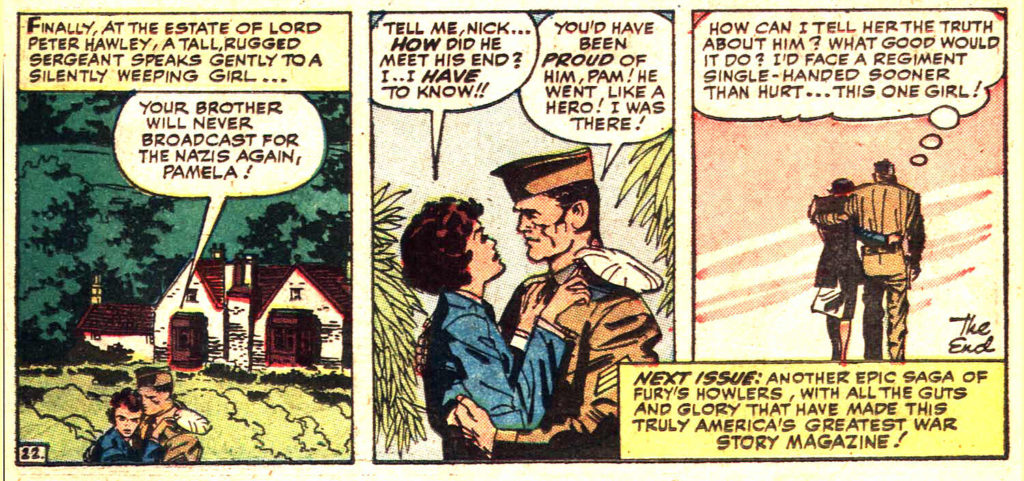














 While plotting Avengers #4, the world changed. On Nov. 22, 1963 the world wept for a young lost leader. America lost its innocence that day, Jack and Roz sat glued to the new color TV set like all Americans, sobbing for the end to Camelot. It has been said that Jack Kennedy’s murder robbed us of our innocence. Comic books seemed to become a little harder in the immediate future. Flo Steinberg—the Marvel gal Friday remembers. “It was the first time I ever saw everyone at the whole company listening to the radio. It was a very sad time. Things changed.” America needed a diversion.
While plotting Avengers #4, the world changed. On Nov. 22, 1963 the world wept for a young lost leader. America lost its innocence that day, Jack and Roz sat glued to the new color TV set like all Americans, sobbing for the end to Camelot. It has been said that Jack Kennedy’s murder robbed us of our innocence. Comic books seemed to become a little harder in the immediate future. Flo Steinberg—the Marvel gal Friday remembers. “It was the first time I ever saw everyone at the whole company listening to the radio. It was a very sad time. Things changed.” America needed a diversion.
 However, Walter Cronkite recalled it differently: “In the wake of the [John F. Kennedy] assassination story, nothing else was happening in the world, at least in the United States — stuff that was important, that is. So we actually had an opportunity to use it. “I was not entirely thrilled with it myself, to tell you the truth. It was not a musical phenomenon to me. The phenomenon was a social one, of these rather tawdry-looking guys; we thought at the time, with their long hair and this crazy singing of theirs, this meaningless ‘wah-wah-wah, wee-wee-wee’ stuff they were doing.”
However, Walter Cronkite recalled it differently: “In the wake of the [John F. Kennedy] assassination story, nothing else was happening in the world, at least in the United States — stuff that was important, that is. So we actually had an opportunity to use it. “I was not entirely thrilled with it myself, to tell you the truth. It was not a musical phenomenon to me. The phenomenon was a social one, of these rather tawdry-looking guys; we thought at the time, with their long hair and this crazy singing of theirs, this meaningless ‘wah-wah-wah, wee-wee-wee’ stuff they were doing.”



























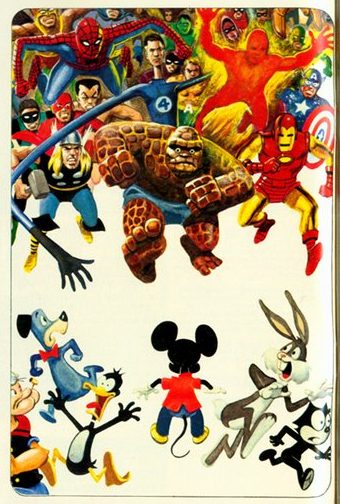
 A true rarity turned up when historian Nick Caputo questioned Stan Goldberg-a teen humor artist – about a questionable piece of art. Nick showed Stan the cover to Modeling With Millie # 45 Feb 1966. This featured a smiling facial shot of Millie that Nick had problems believing Stan had drawn. Stan’s eye lit up. Nick asked Stan if the face was drawn by someone else. With a twinkle in his eyes he say “Jack Kirby drew that face” This fortified Nick’s faith in his work as he had told others that he thought Jack Kirby had drawn this face. Stan told him that Stan Lee wasn’t happy with the original face and asked Jack to make a quick correction- something Stan says was not unusual. He said Jack even inked some work for a small book Stan Lee published on golf.
A true rarity turned up when historian Nick Caputo questioned Stan Goldberg-a teen humor artist – about a questionable piece of art. Nick showed Stan the cover to Modeling With Millie # 45 Feb 1966. This featured a smiling facial shot of Millie that Nick had problems believing Stan had drawn. Stan’s eye lit up. Nick asked Stan if the face was drawn by someone else. With a twinkle in his eyes he say “Jack Kirby drew that face” This fortified Nick’s faith in his work as he had told others that he thought Jack Kirby had drawn this face. Stan told him that Stan Lee wasn’t happy with the original face and asked Jack to make a quick correction- something Stan says was not unusual. He said Jack even inked some work for a small book Stan Lee published on golf.
















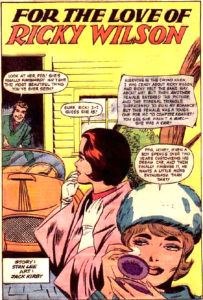



 Likewise early on John Lennon and Paul McCartney began collaborating on writing songs. They would cut school and head over to Paul’s house where they would exchange lyrics and work out basic tunes on the piano. Many of the songs they wrote between this time and when Beatlemania began to take off in 1963, were co-written equally; as Paul said, ‘eyeball to eyeball’. Compositions from this period include ‘She loves You’, ‘There’s A Place’, ‘From Me To You’, ‘Thank You Girl’, ‘I’ll Get You’, ‘I Wanna Be Your Man’, ‘Little Child’ and ‘I Want to Hold Your Hand’. John explained “All the better songs that we have written – the ones that anybody wants to hear – those were co-written. Sometimes half the words are written by me and he’ll finish them off. We go along a word each, practically.” Individual qualities become obvious; McCartney’s easy going harmonies, and John’s cutting iconoclastic personality, but the finished product has its own flavor and feeling blending both influences seamlessly creating its own oeuvre.
Likewise early on John Lennon and Paul McCartney began collaborating on writing songs. They would cut school and head over to Paul’s house where they would exchange lyrics and work out basic tunes on the piano. Many of the songs they wrote between this time and when Beatlemania began to take off in 1963, were co-written equally; as Paul said, ‘eyeball to eyeball’. Compositions from this period include ‘She loves You’, ‘There’s A Place’, ‘From Me To You’, ‘Thank You Girl’, ‘I’ll Get You’, ‘I Wanna Be Your Man’, ‘Little Child’ and ‘I Want to Hold Your Hand’. John explained “All the better songs that we have written – the ones that anybody wants to hear – those were co-written. Sometimes half the words are written by me and he’ll finish them off. We go along a word each, practically.” Individual qualities become obvious; McCartney’s easy going harmonies, and John’s cutting iconoclastic personality, but the finished product has its own flavor and feeling blending both influences seamlessly creating its own oeuvre.











